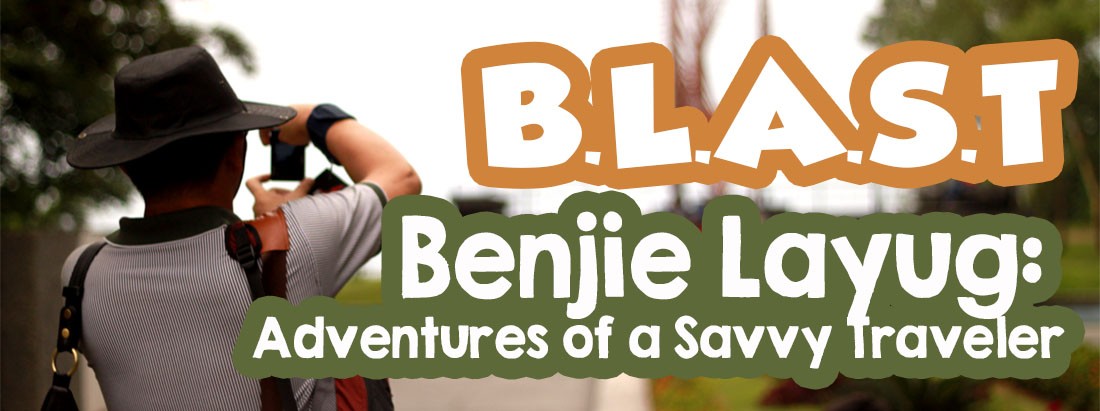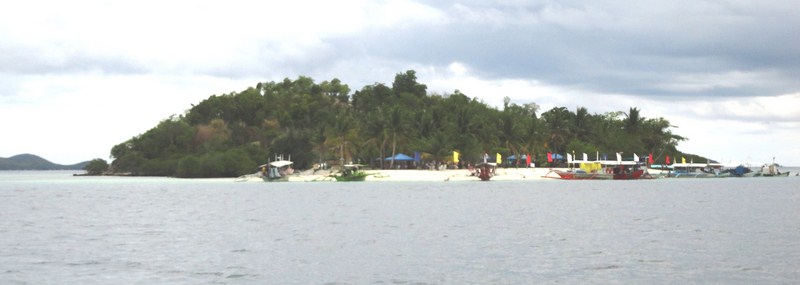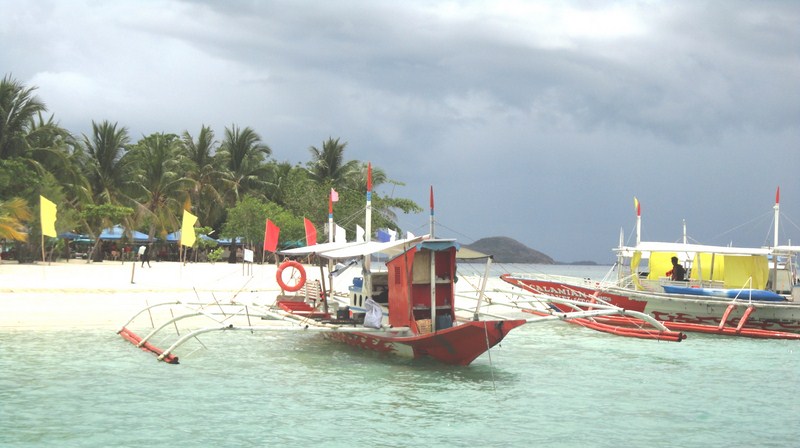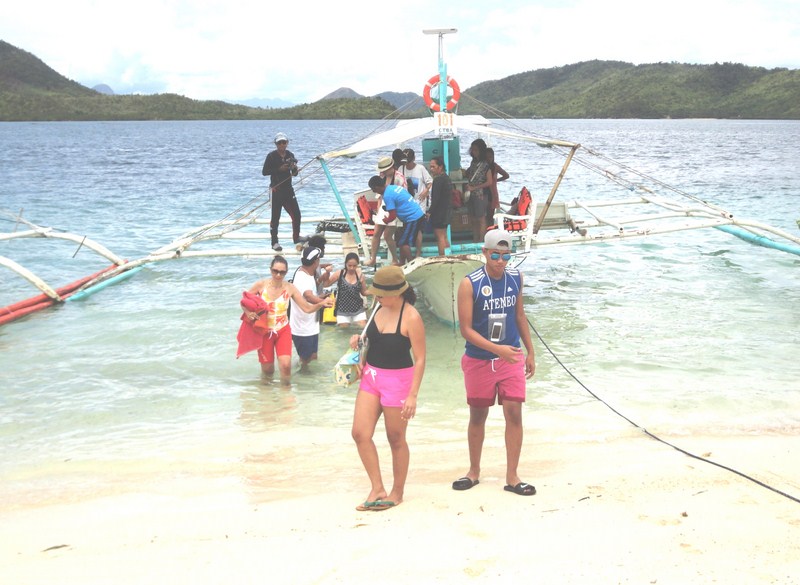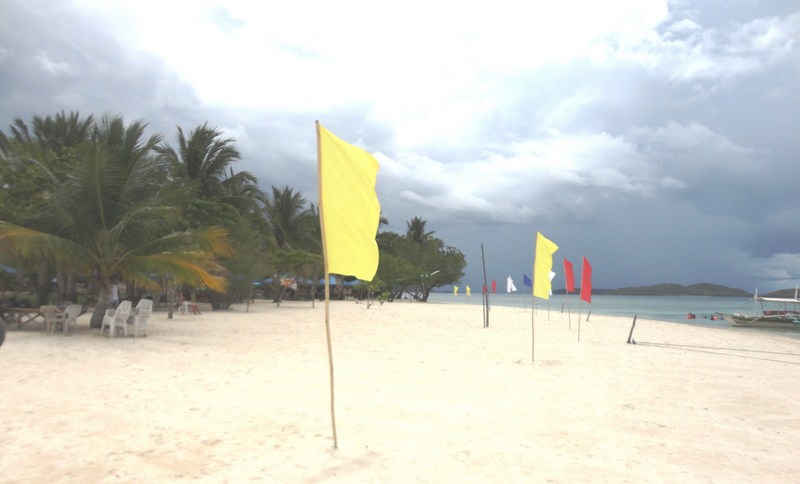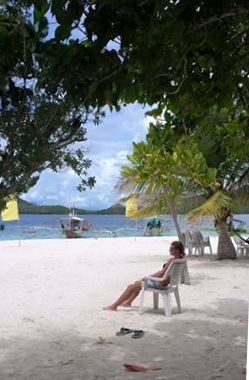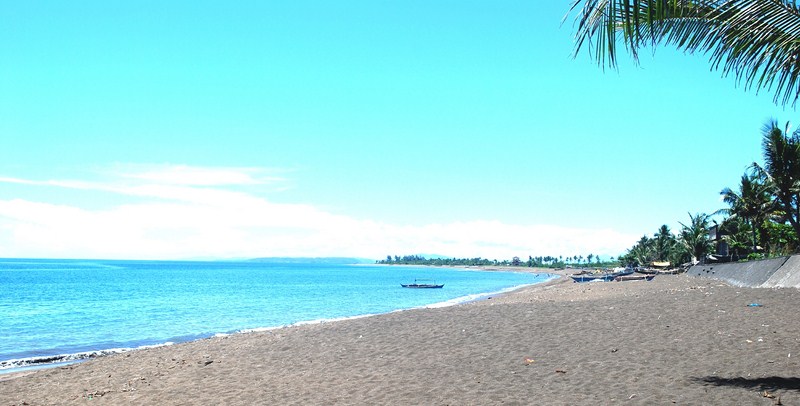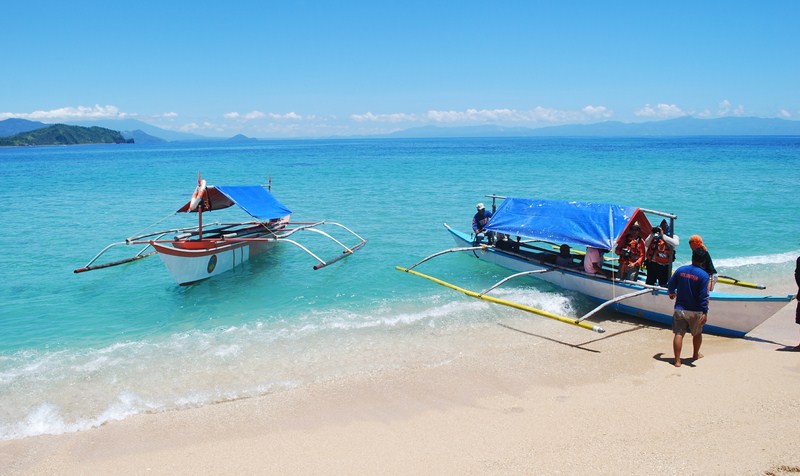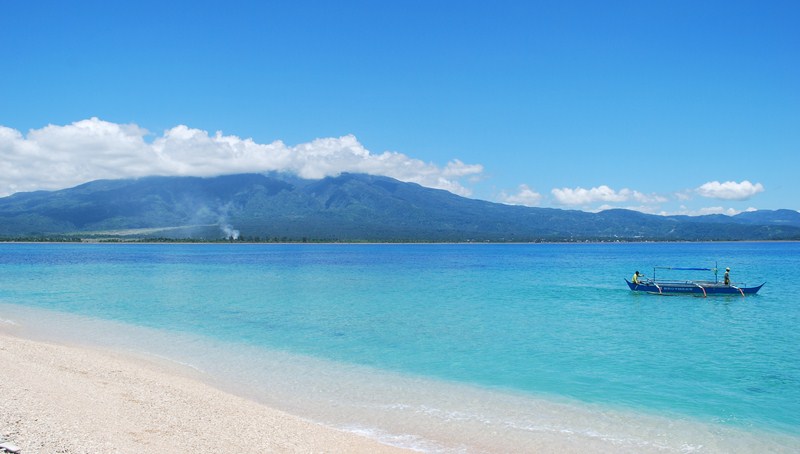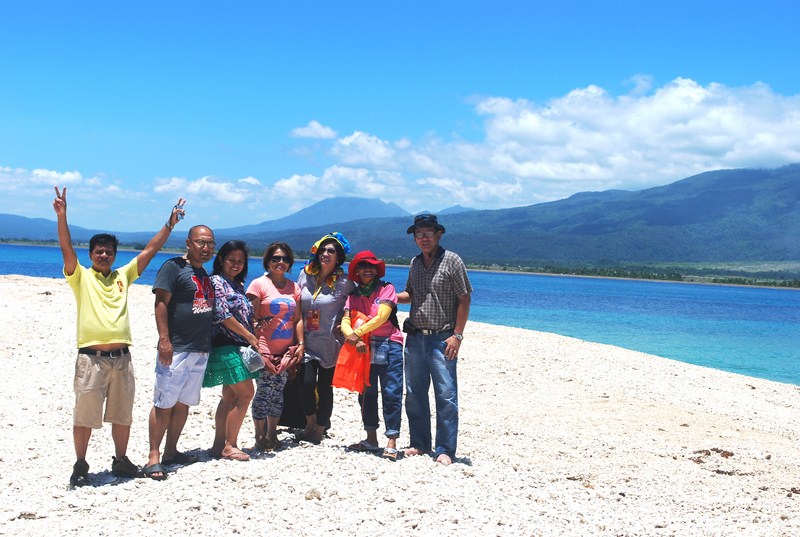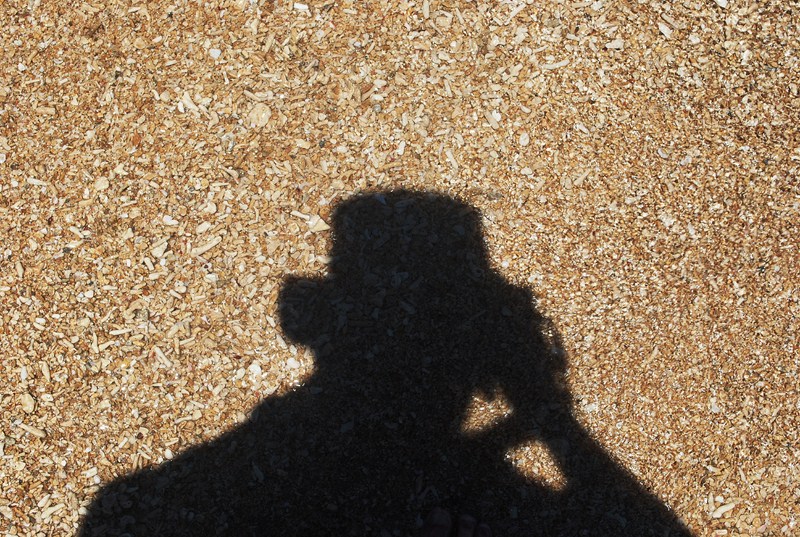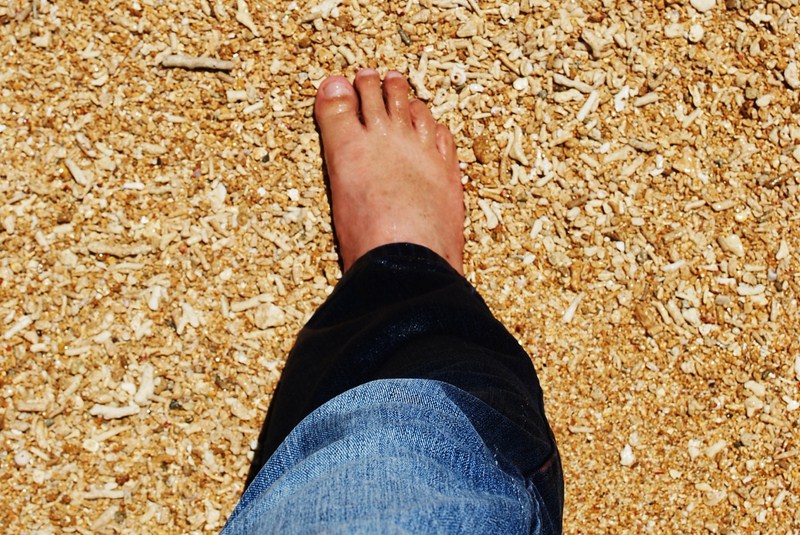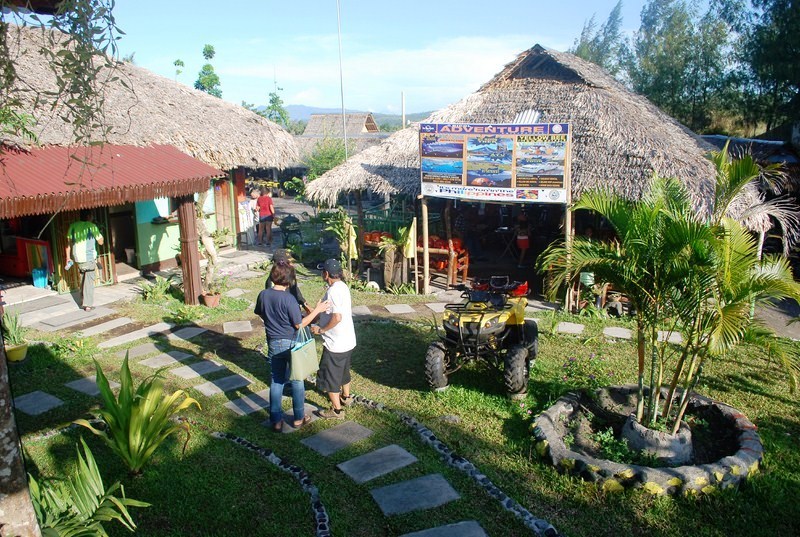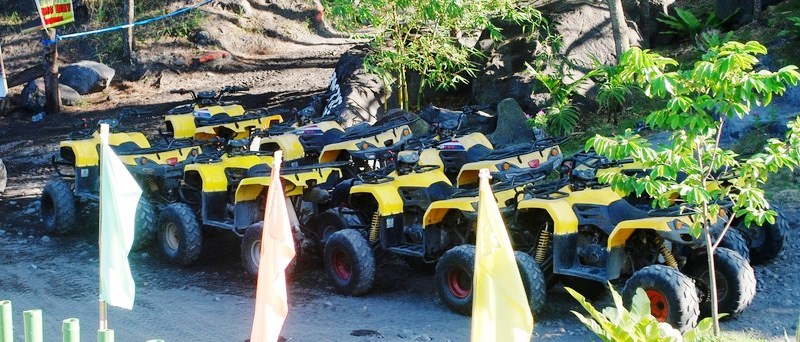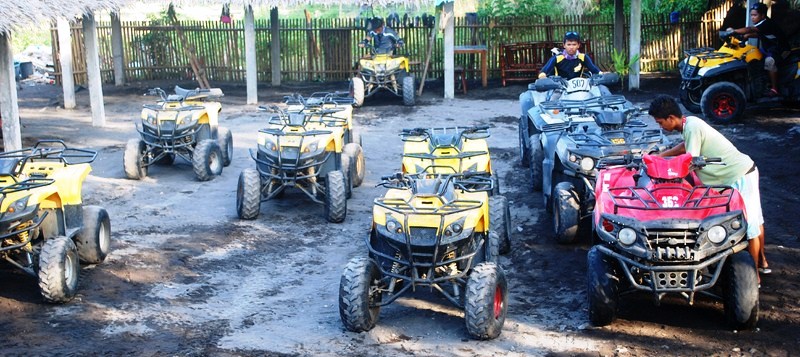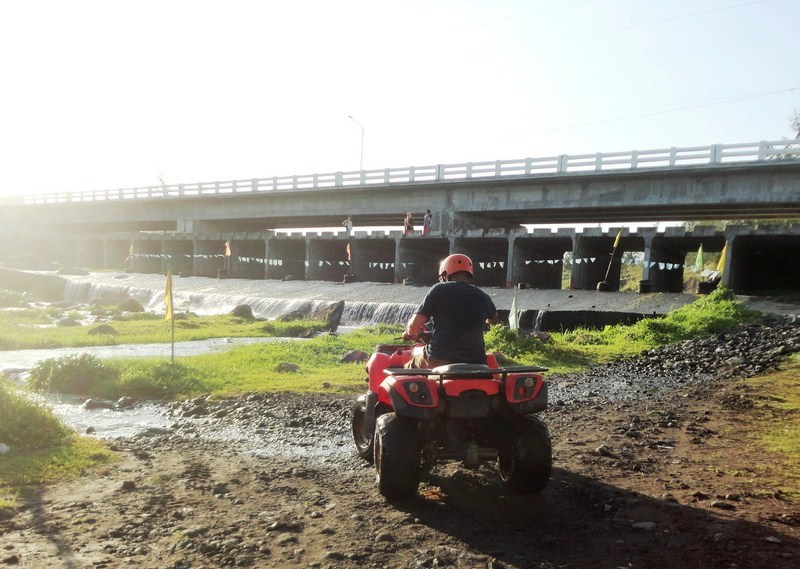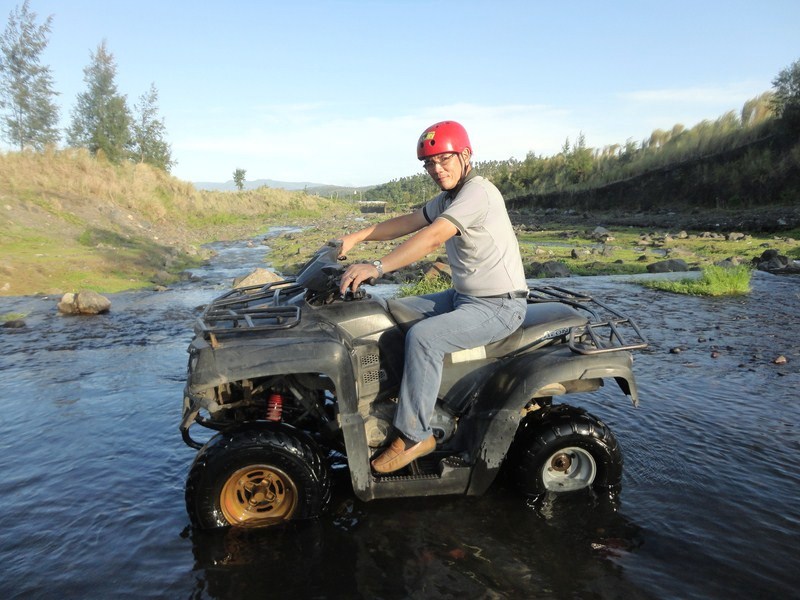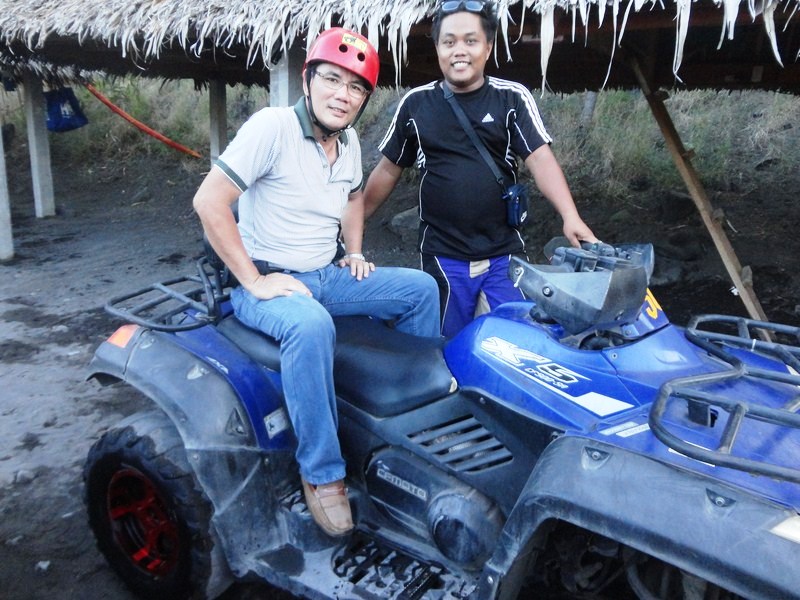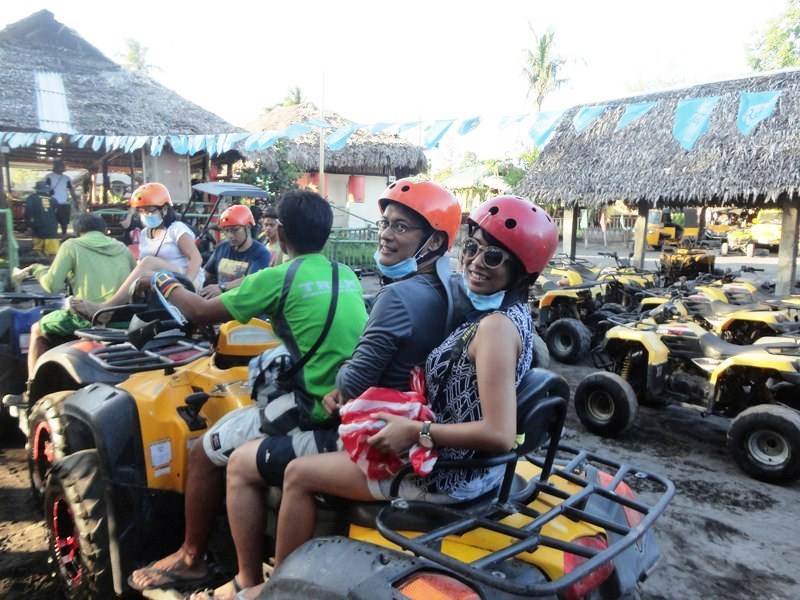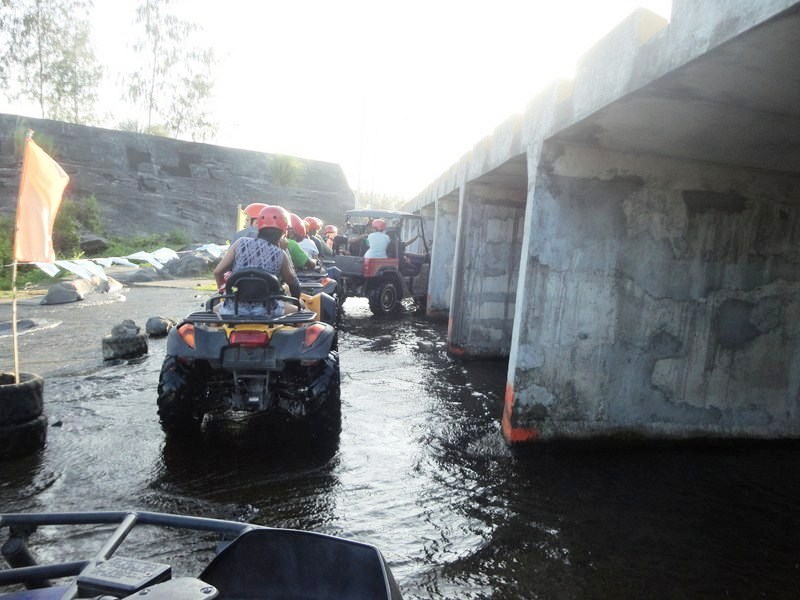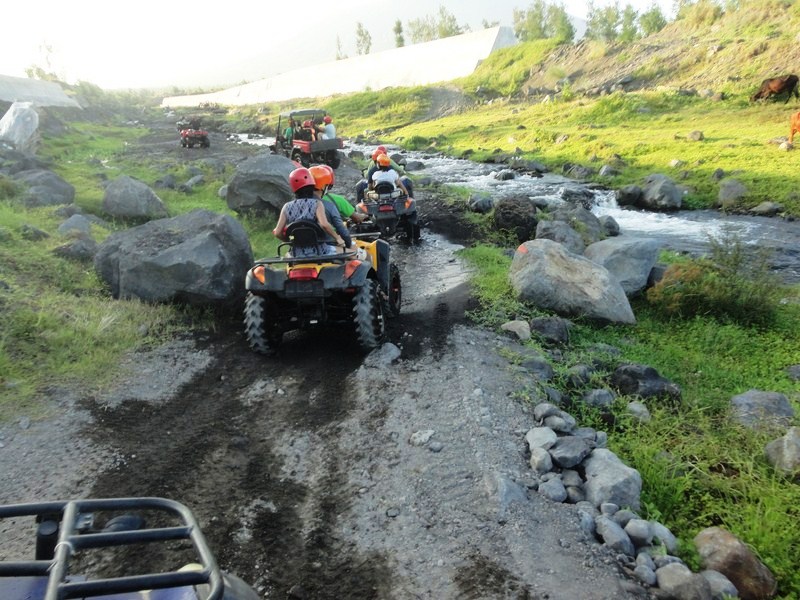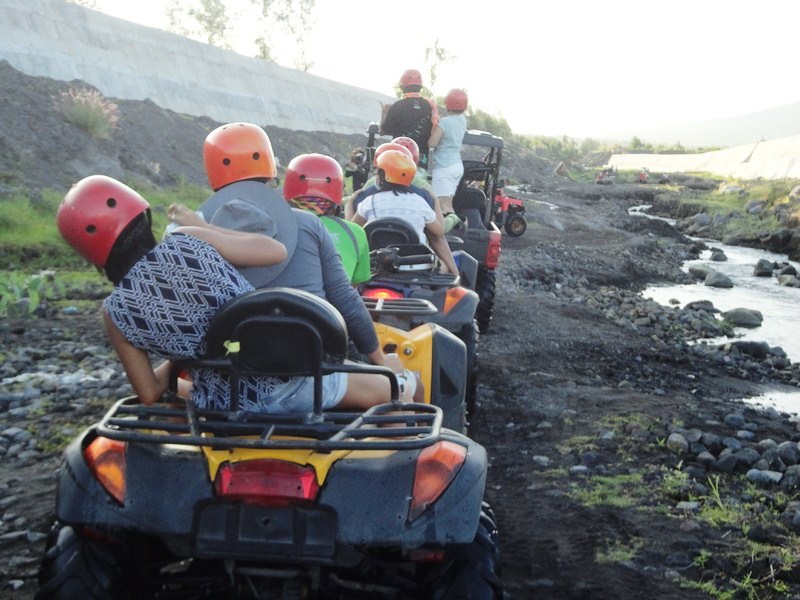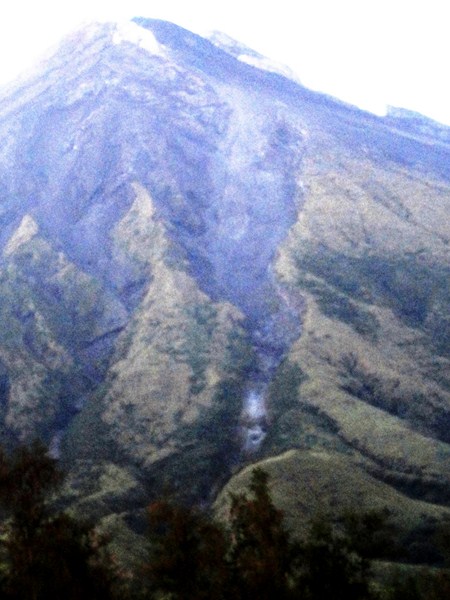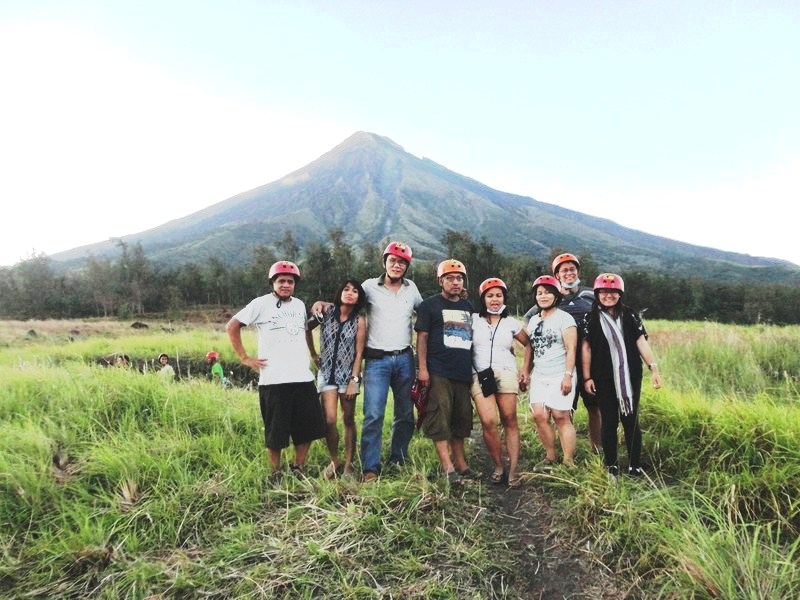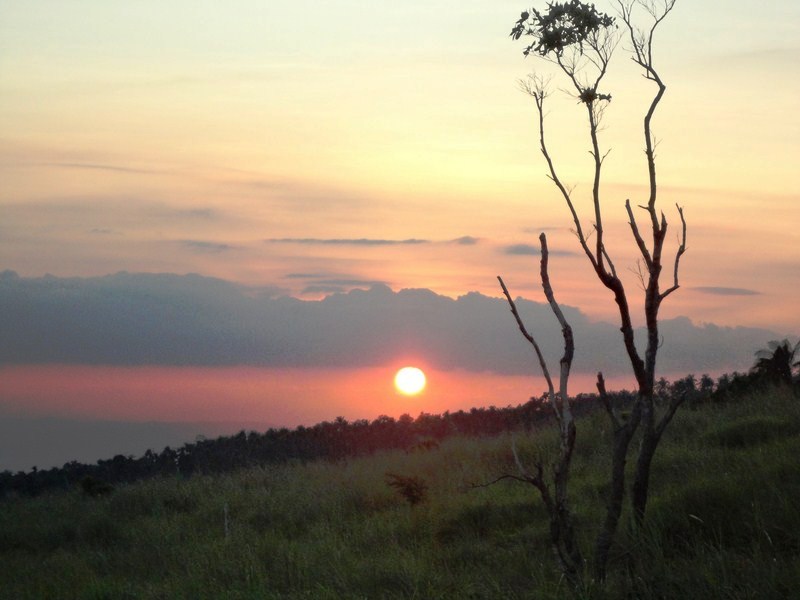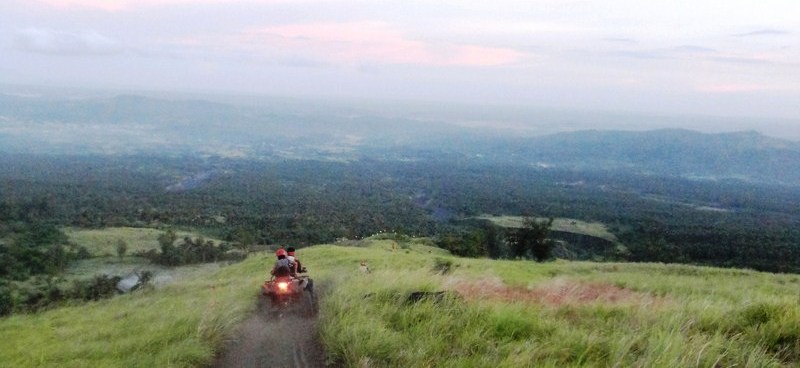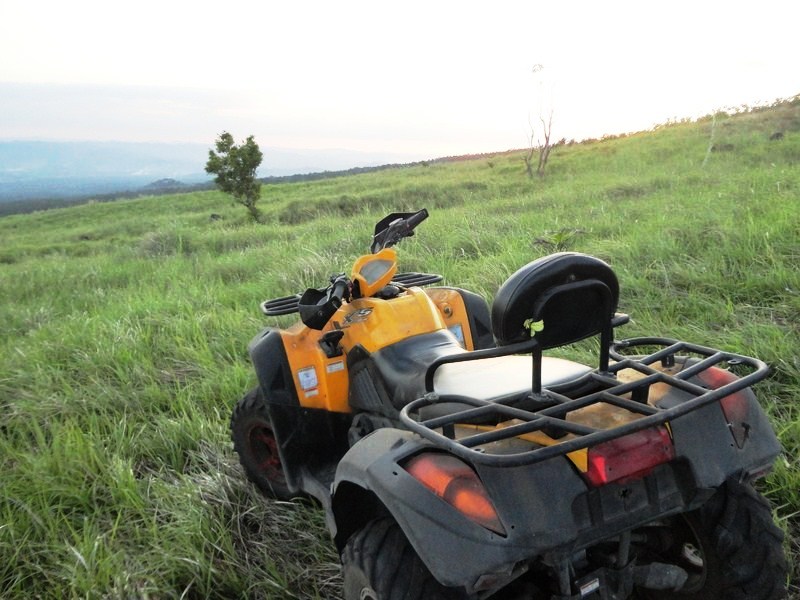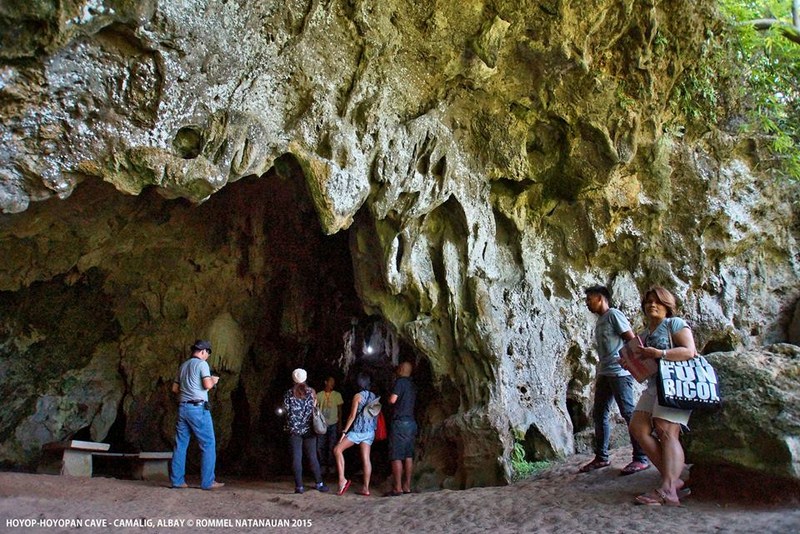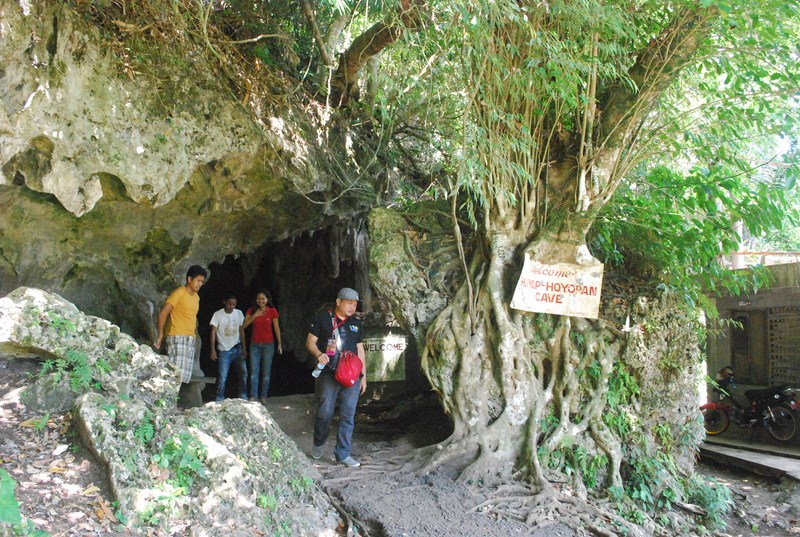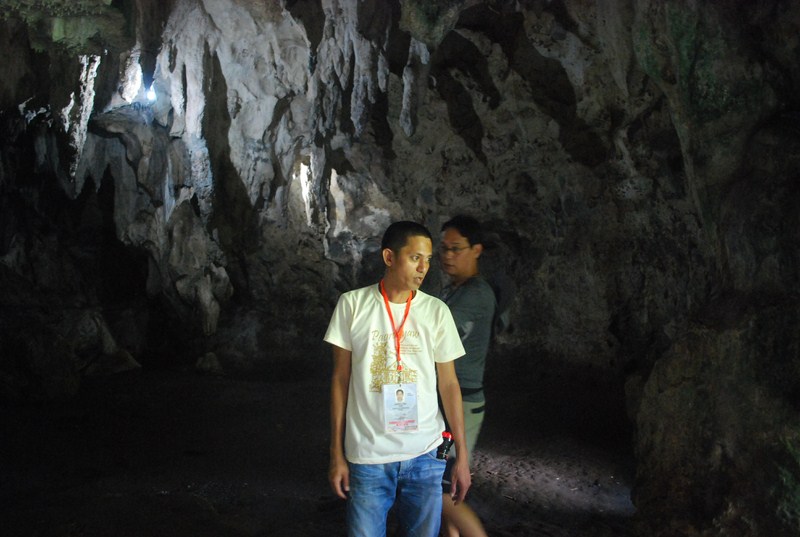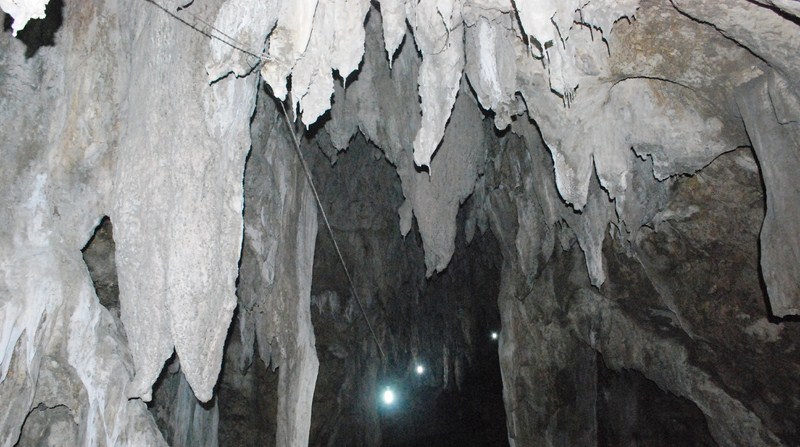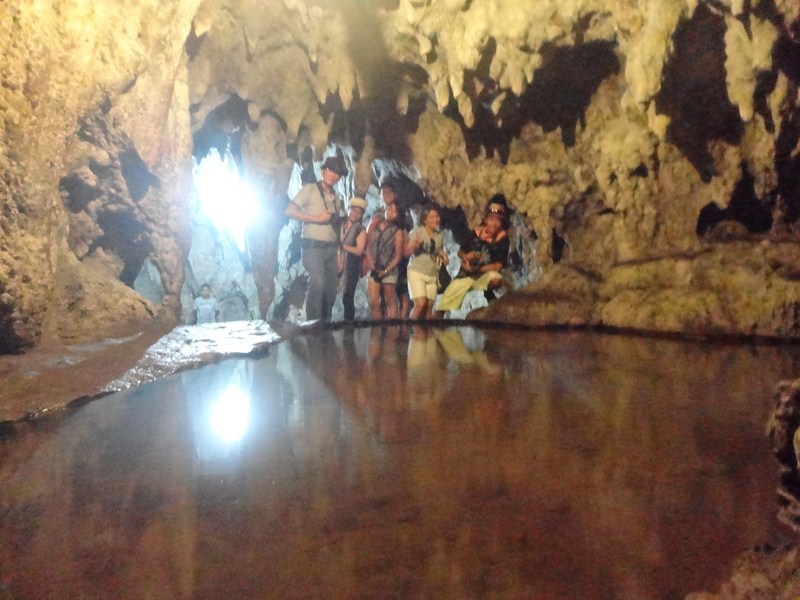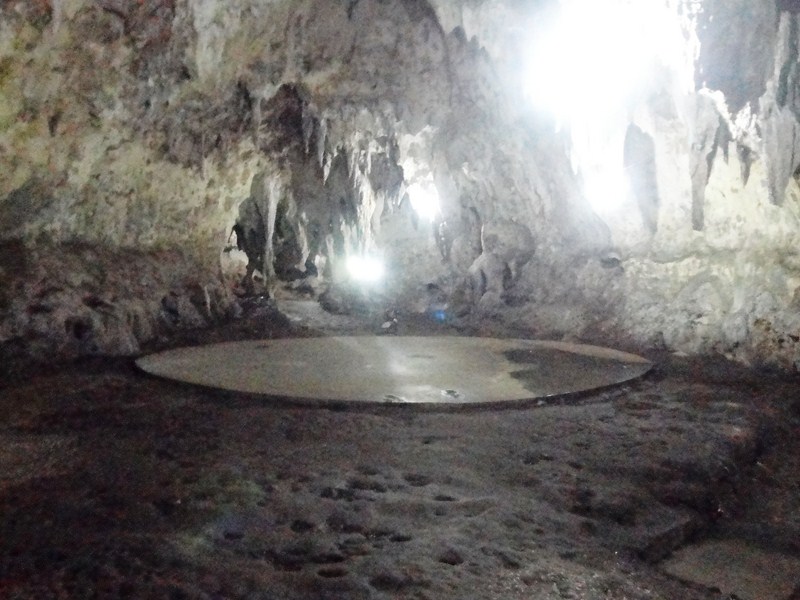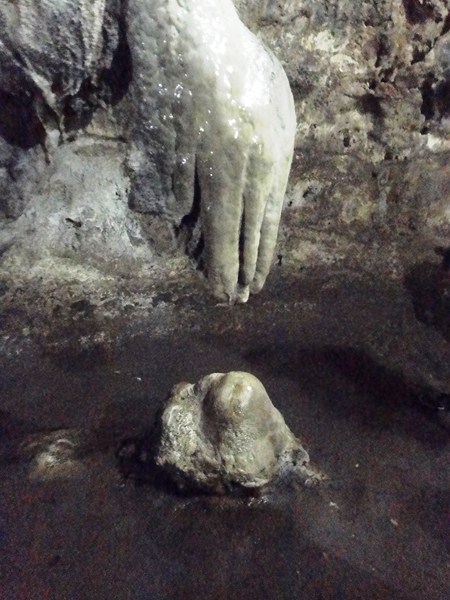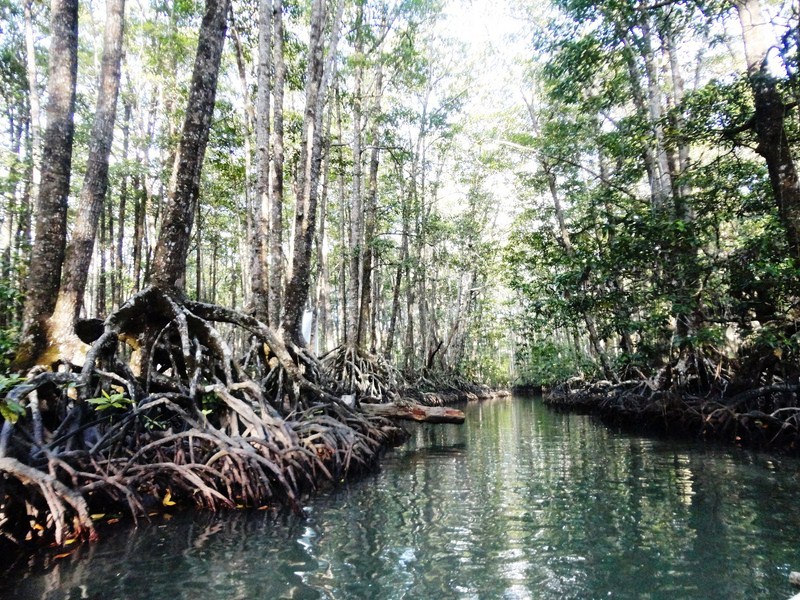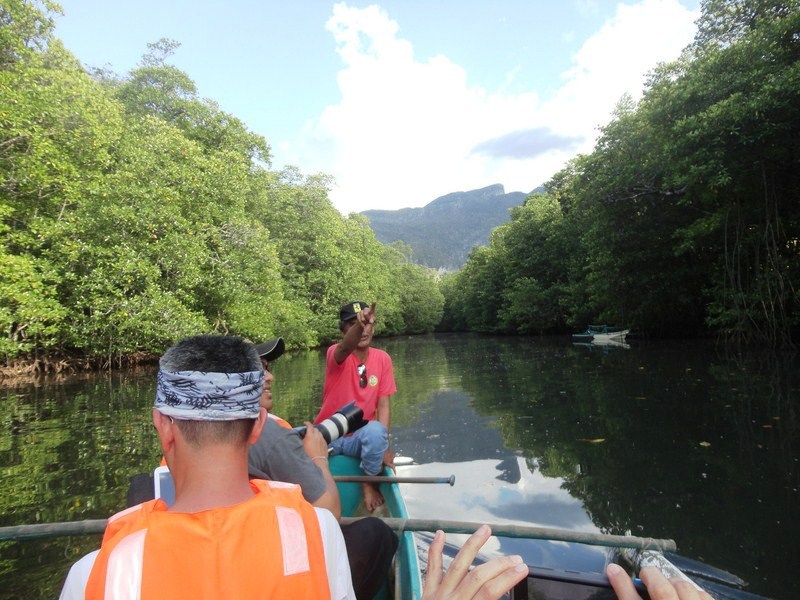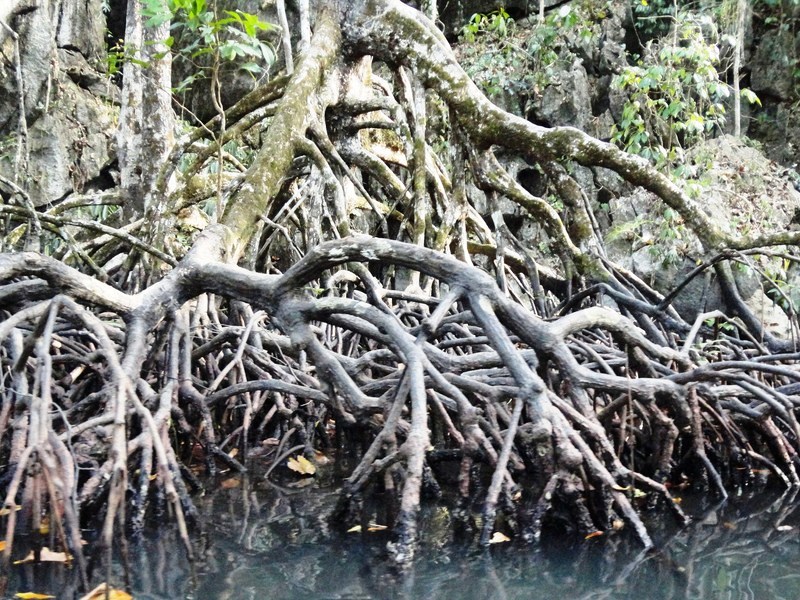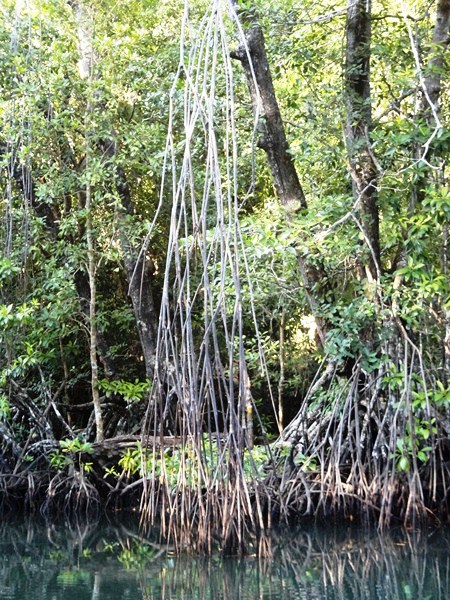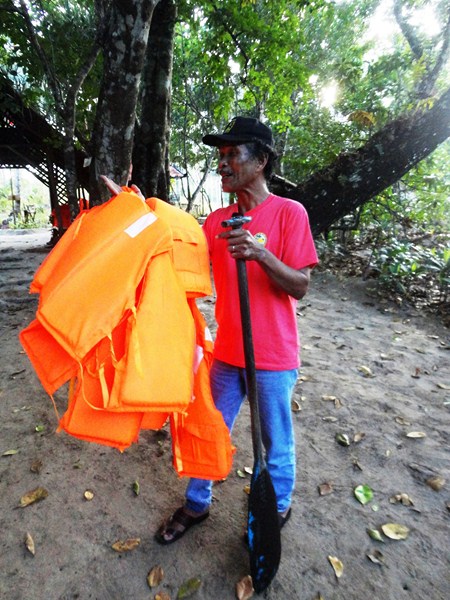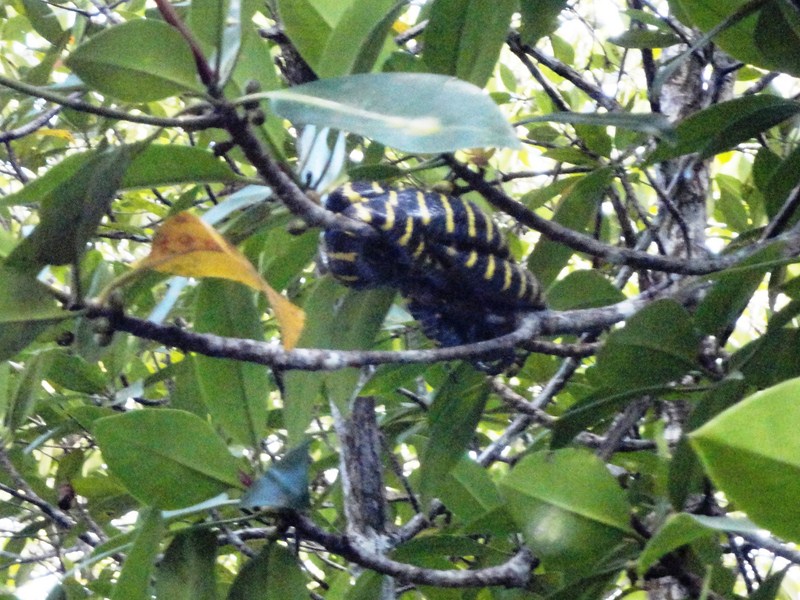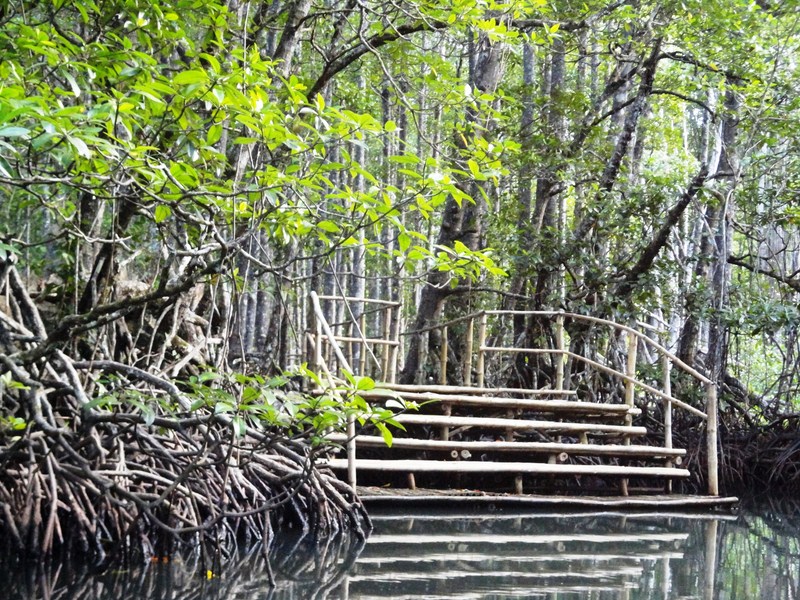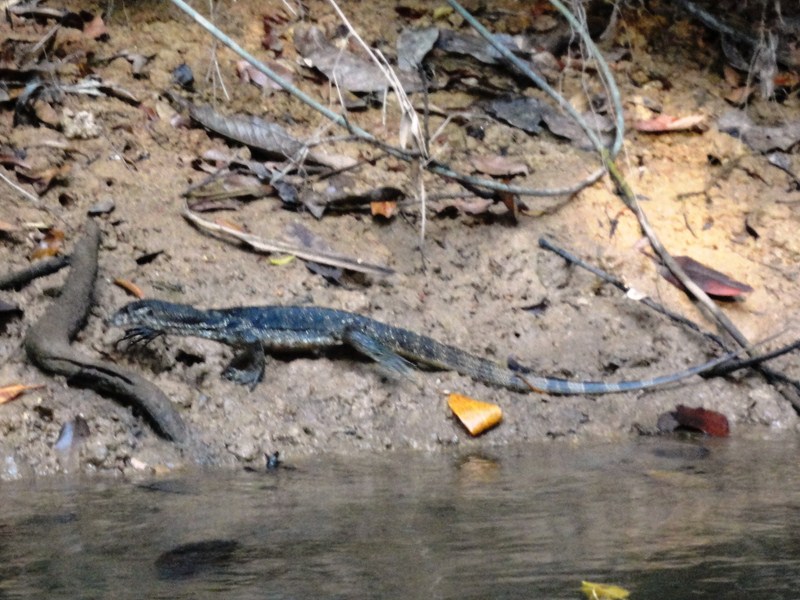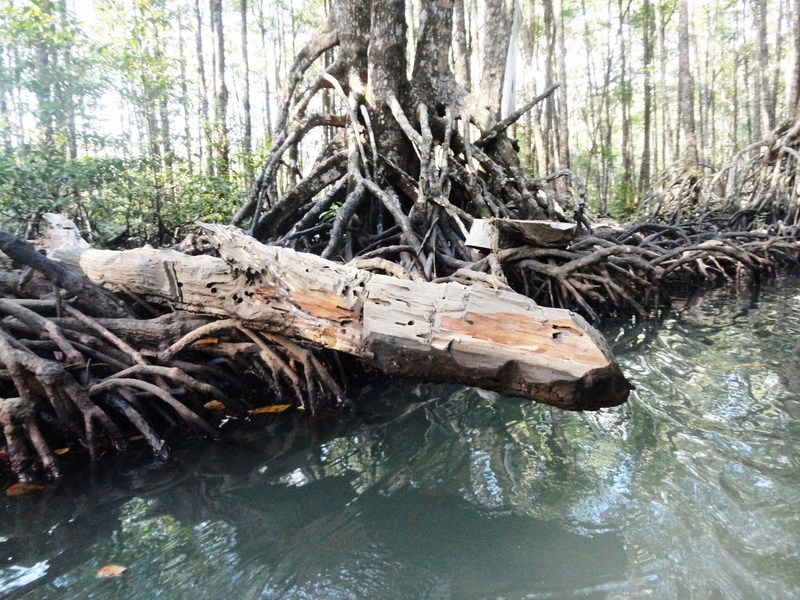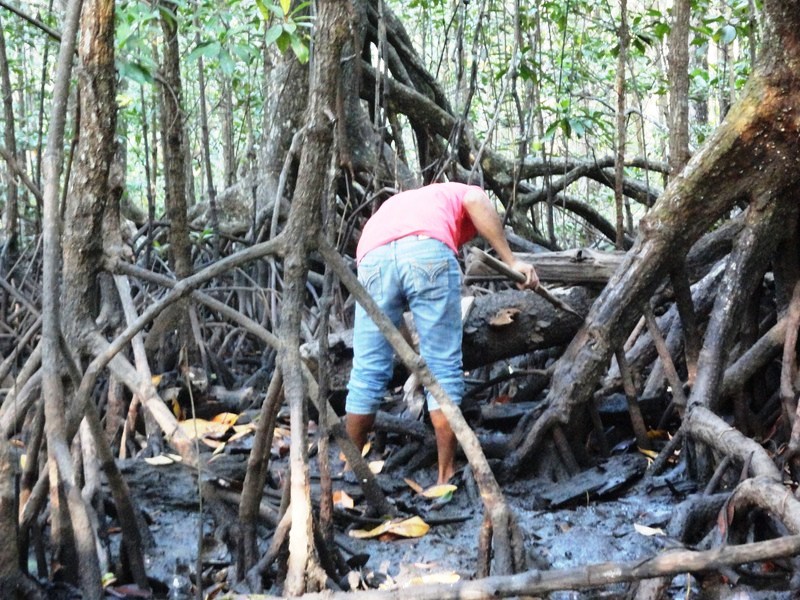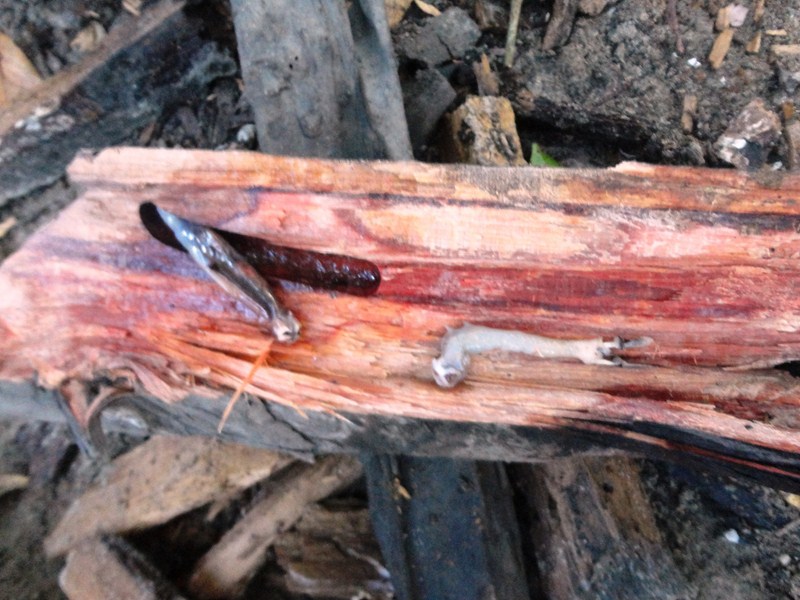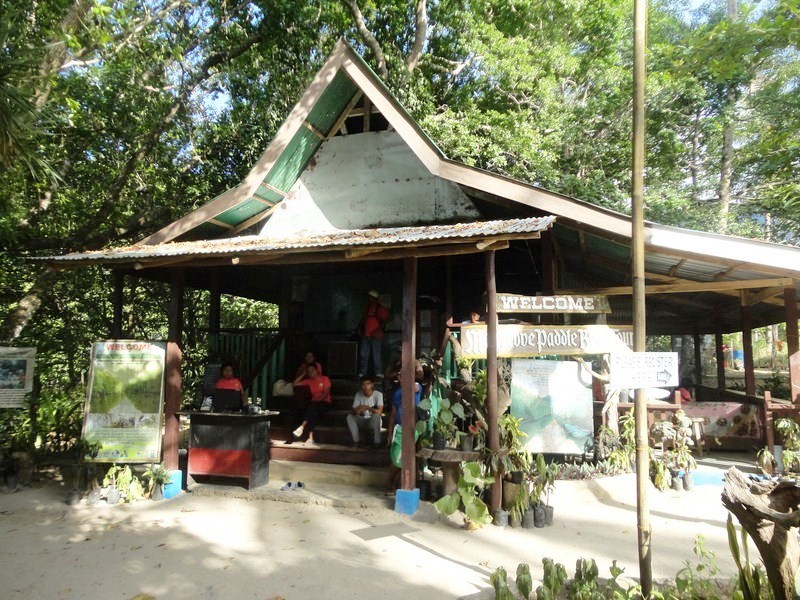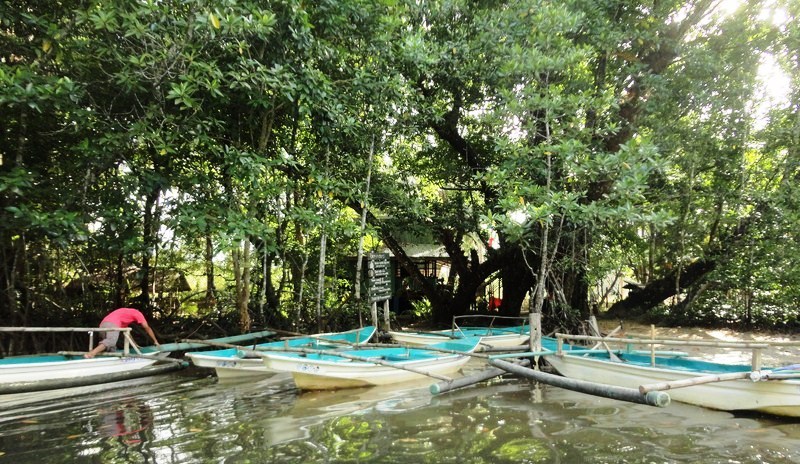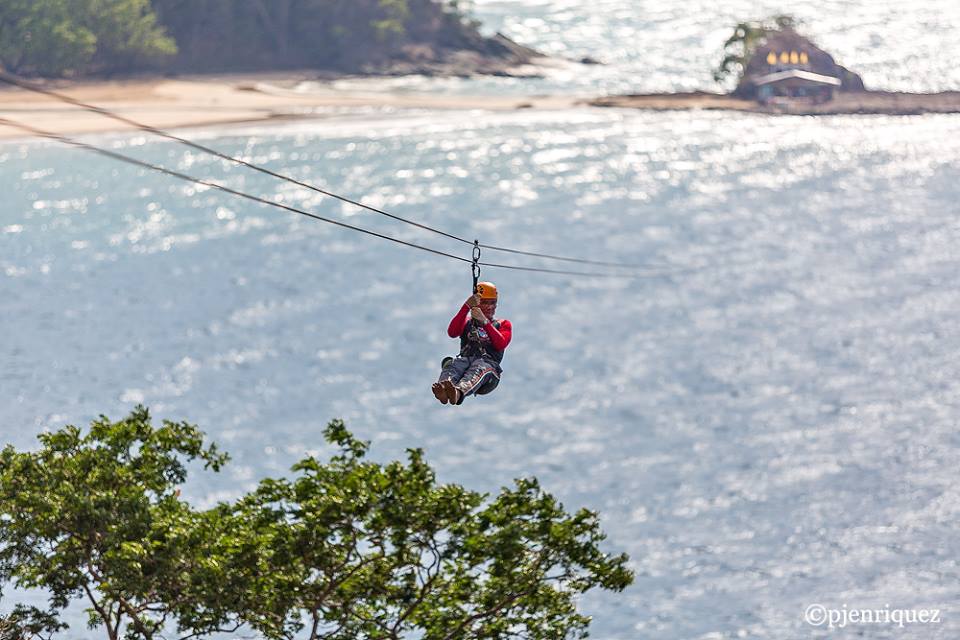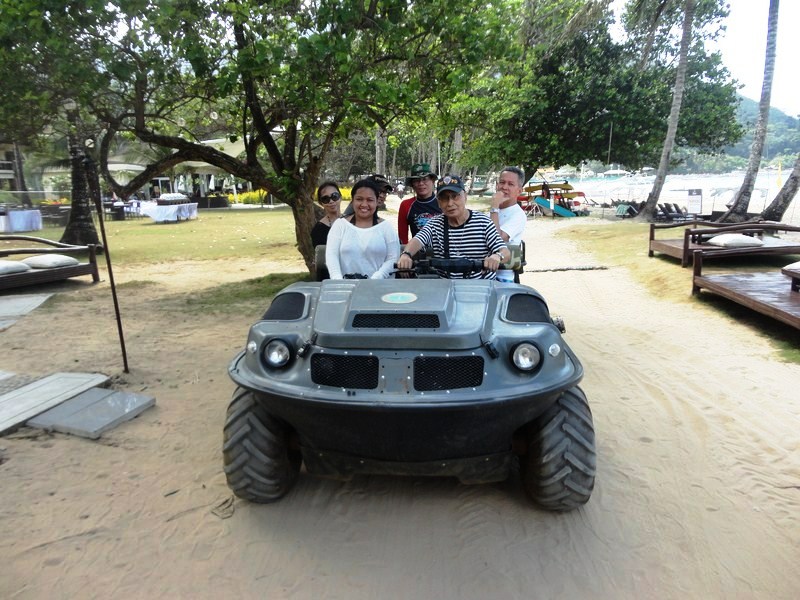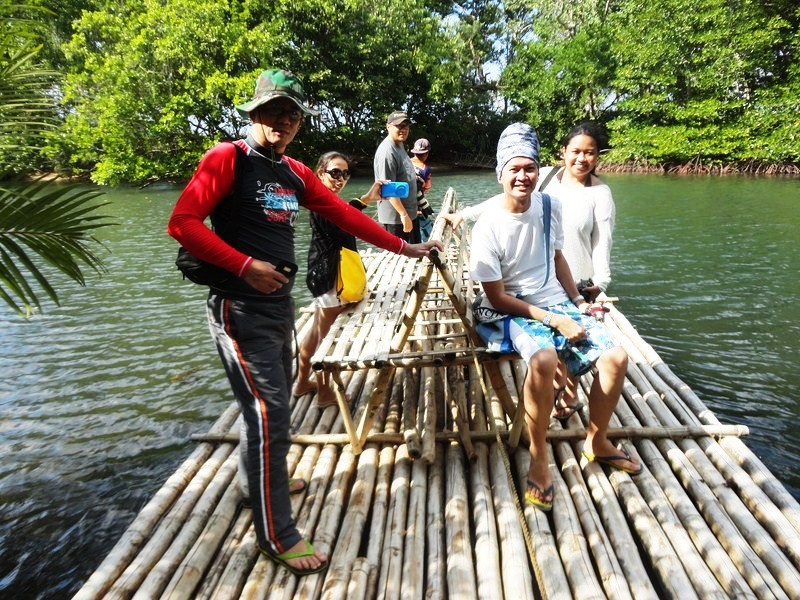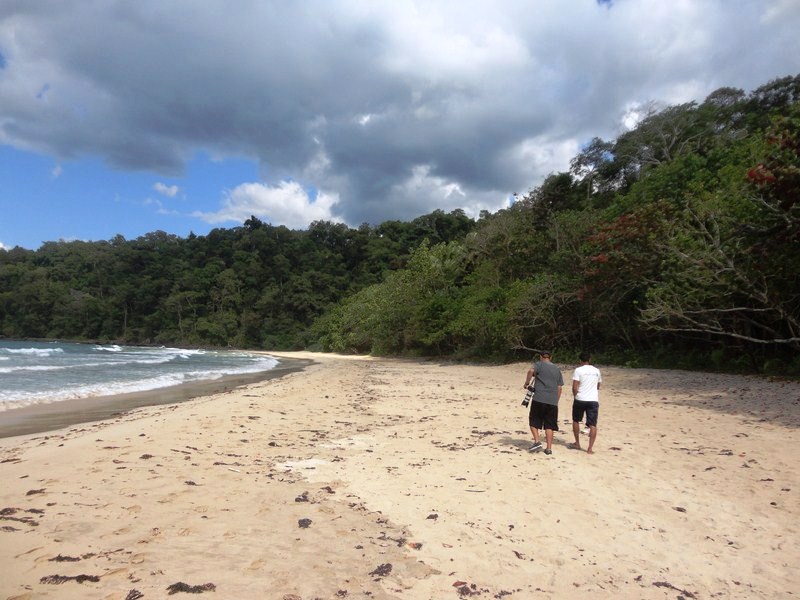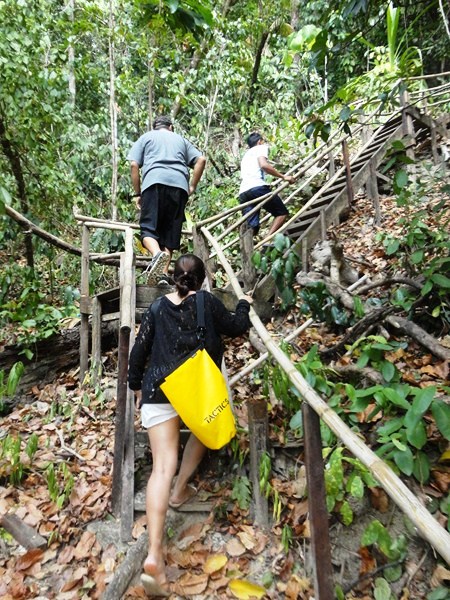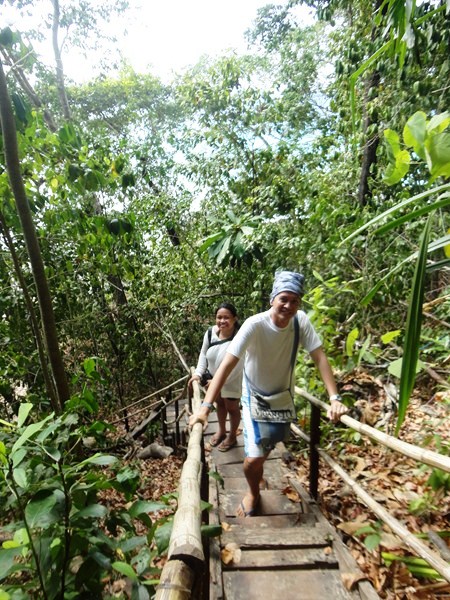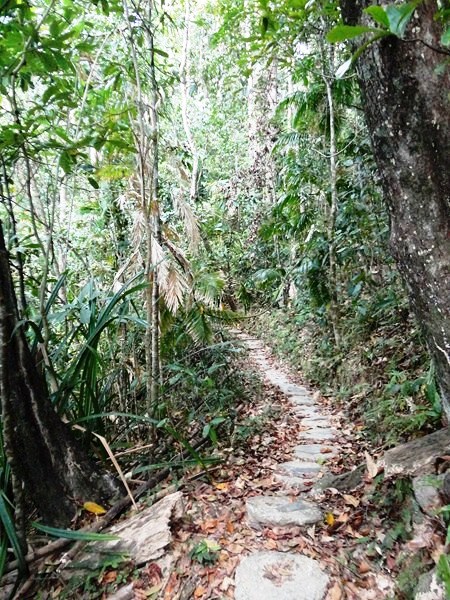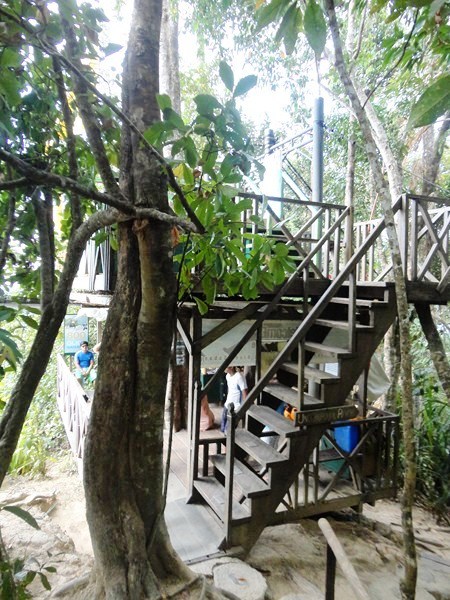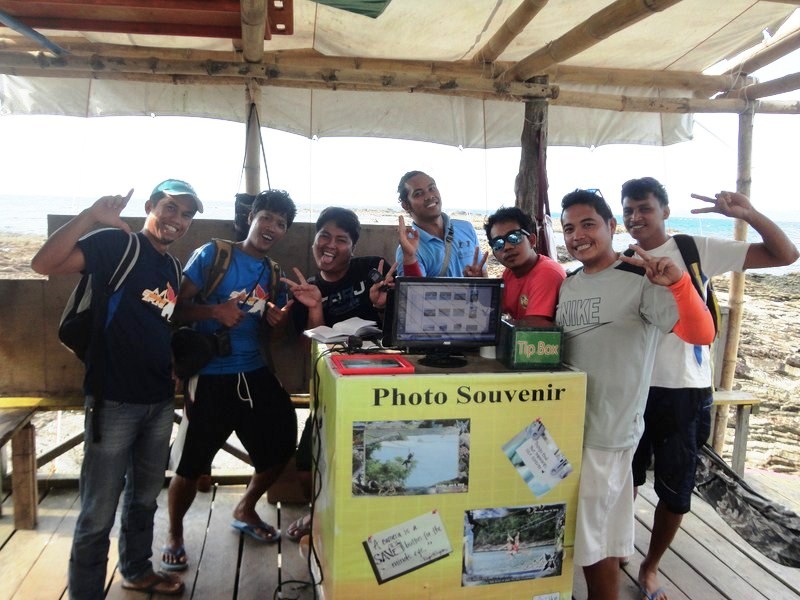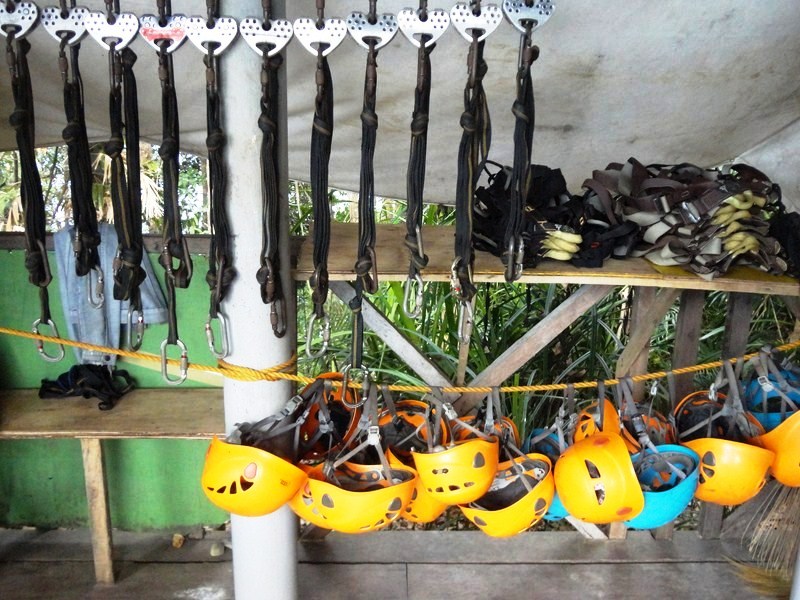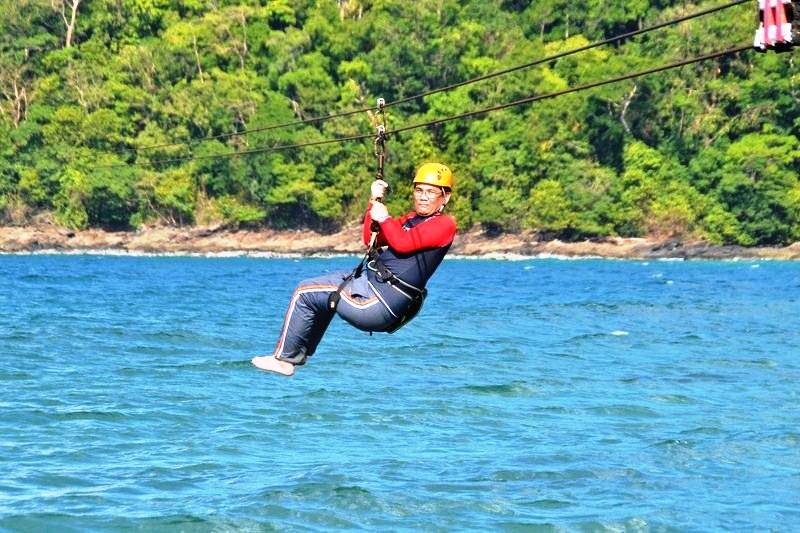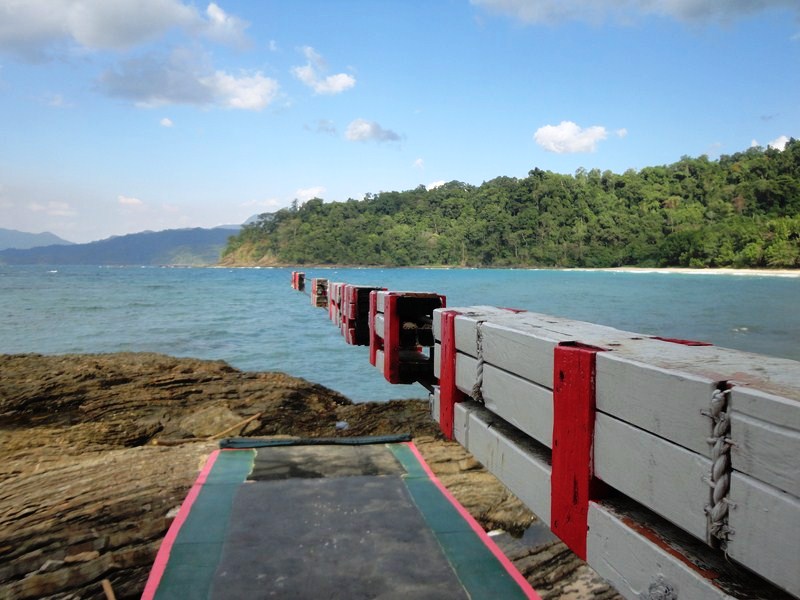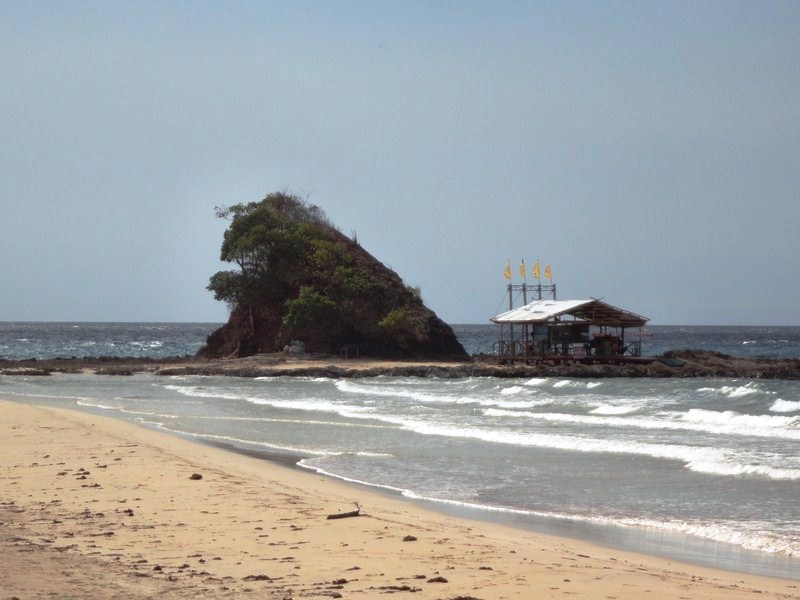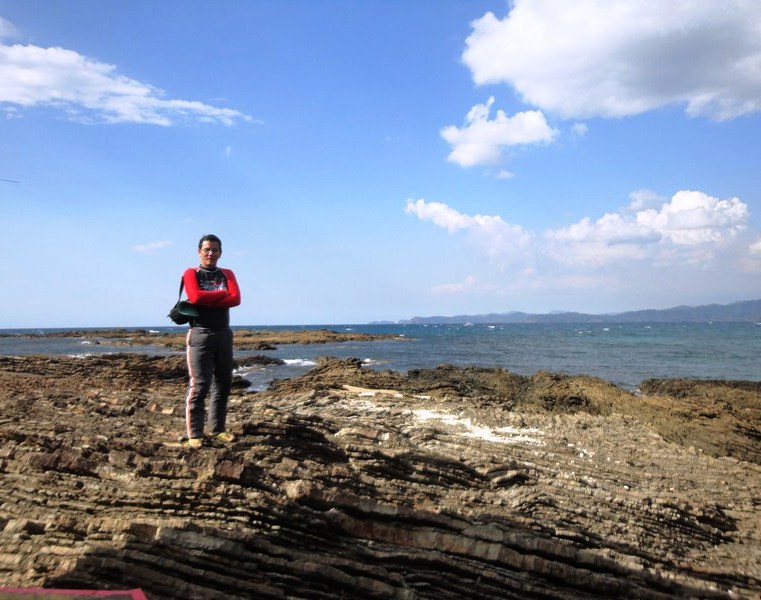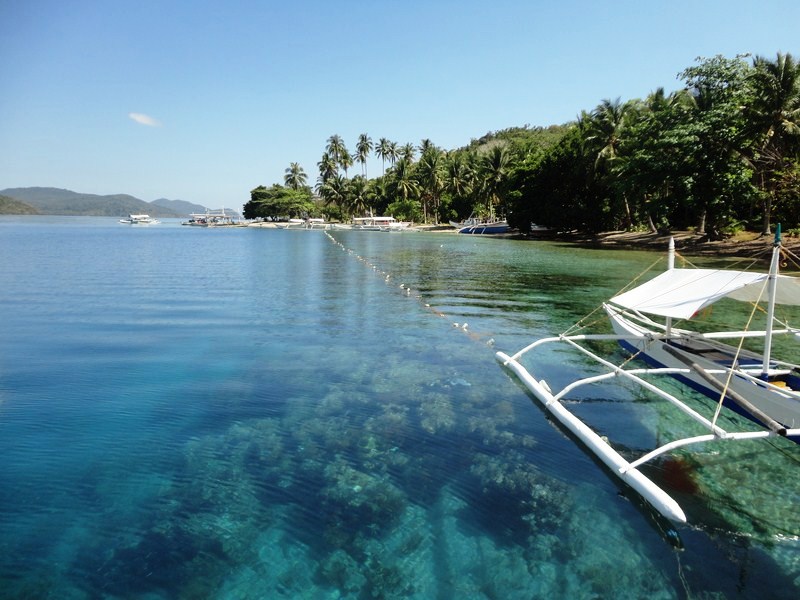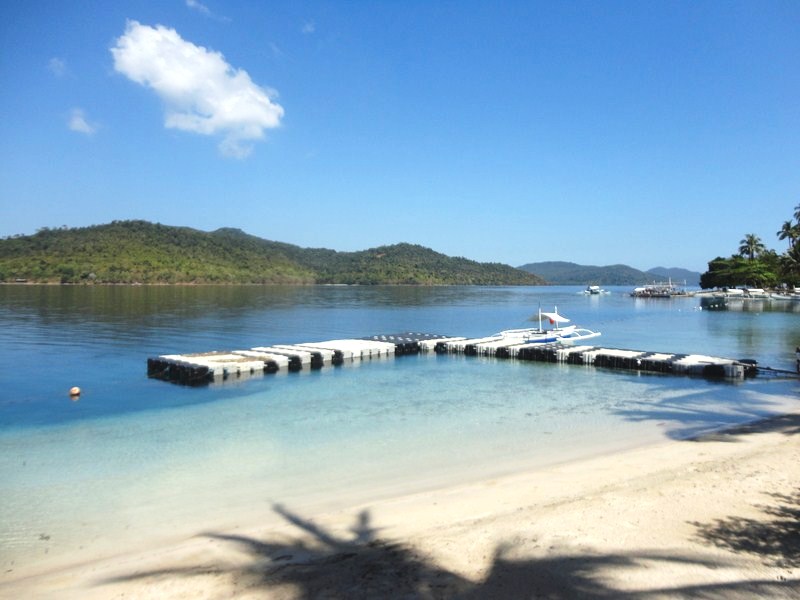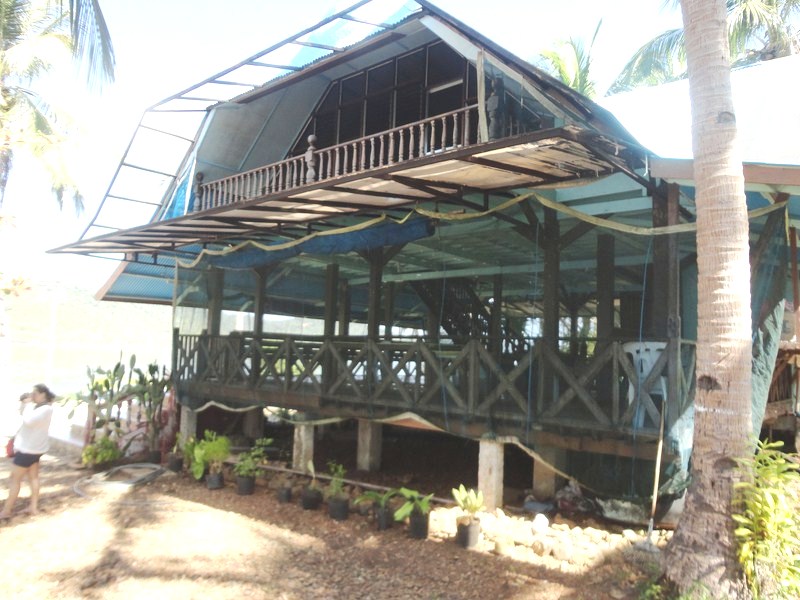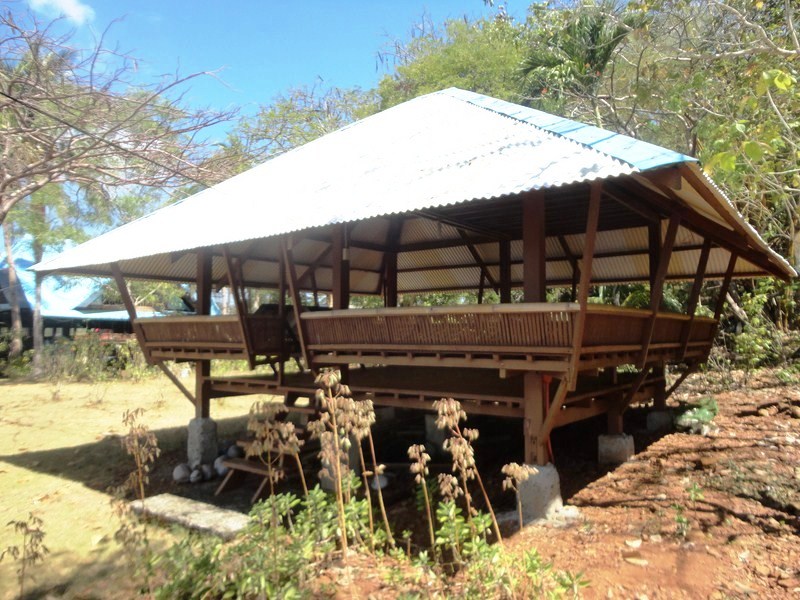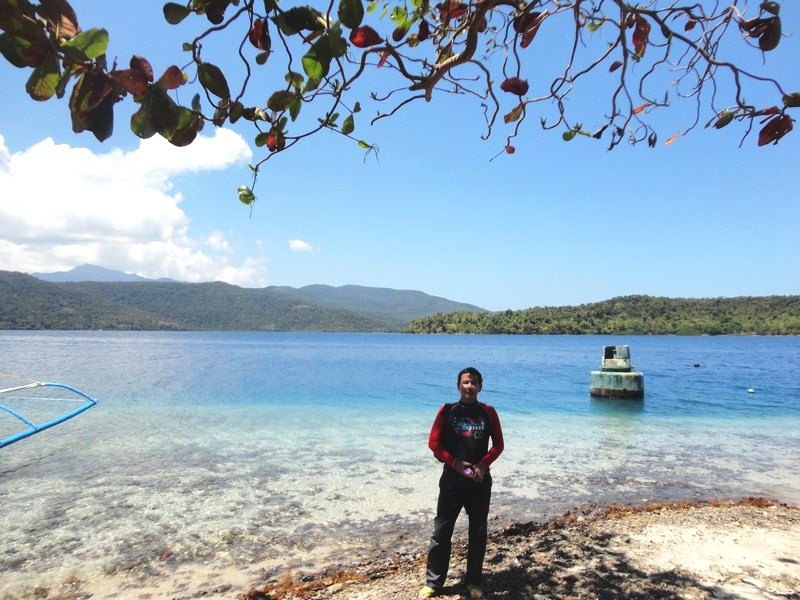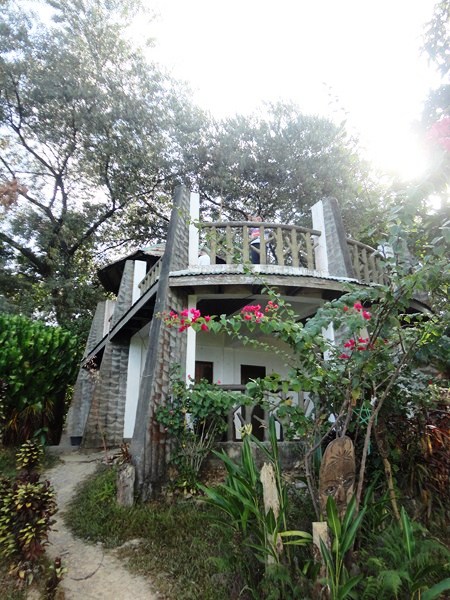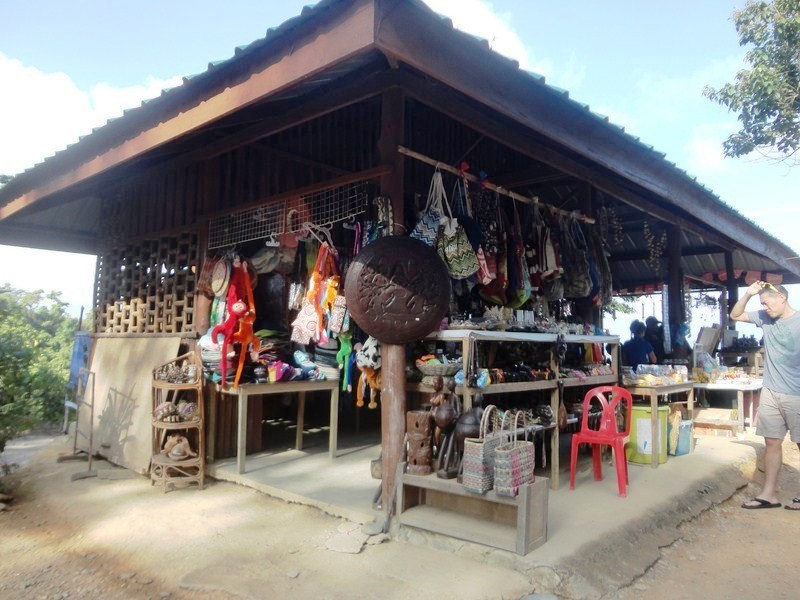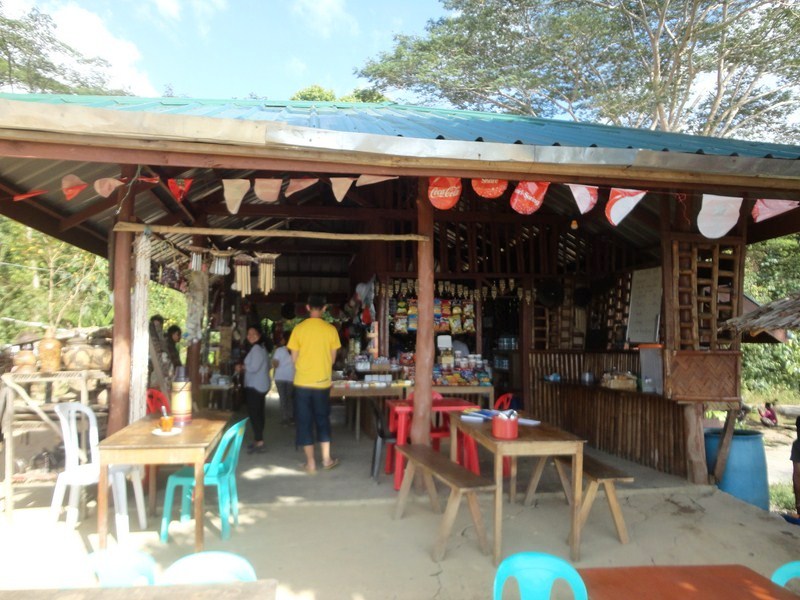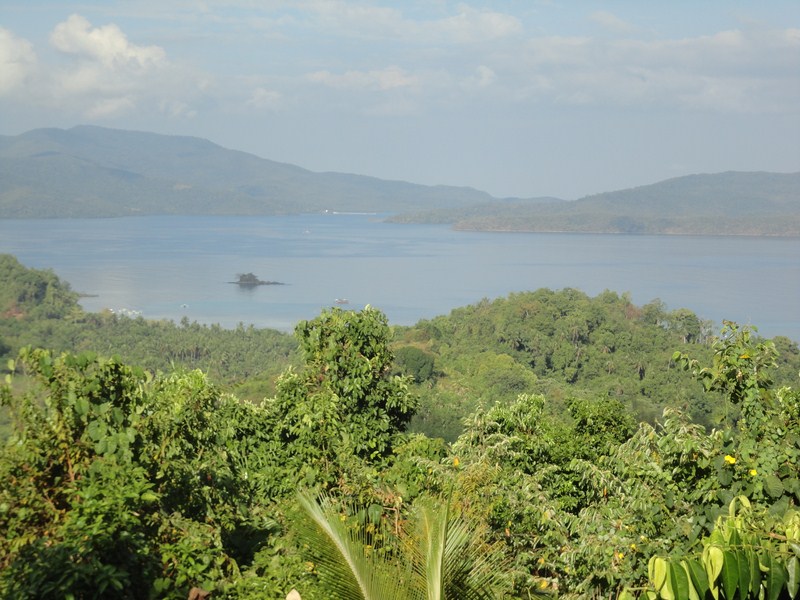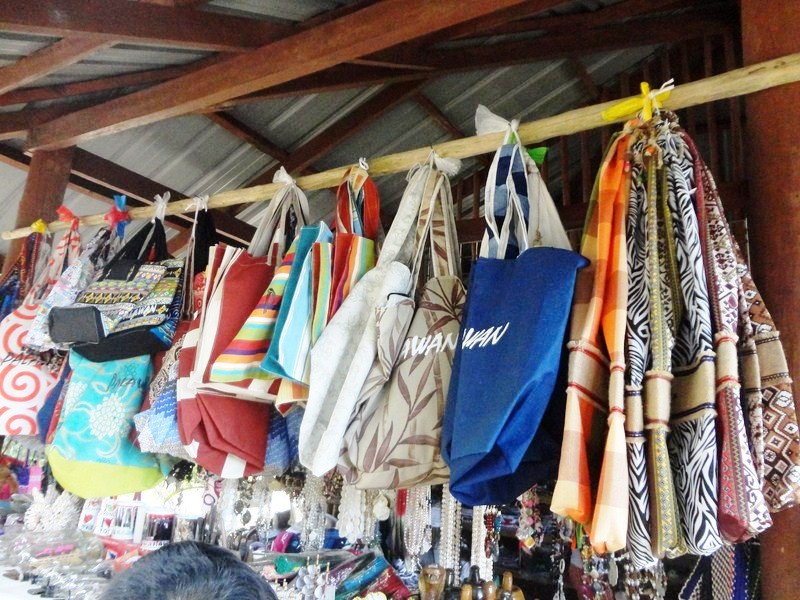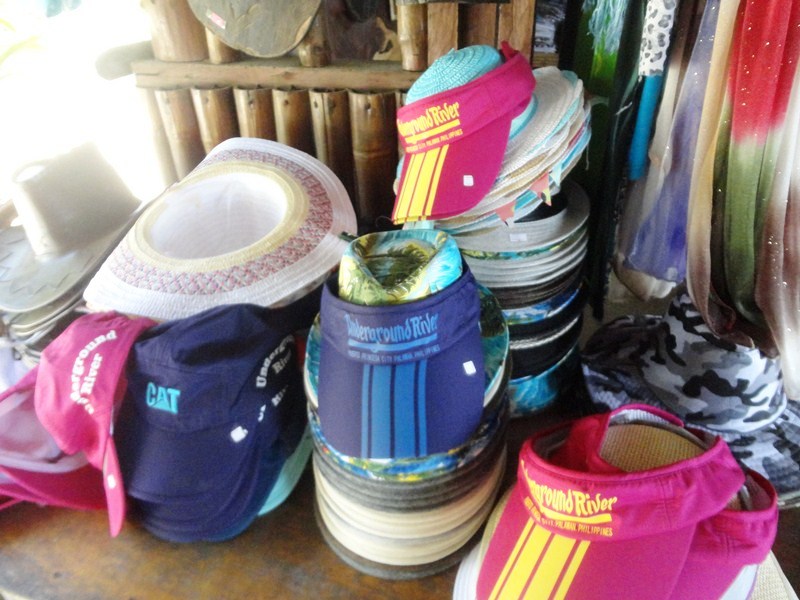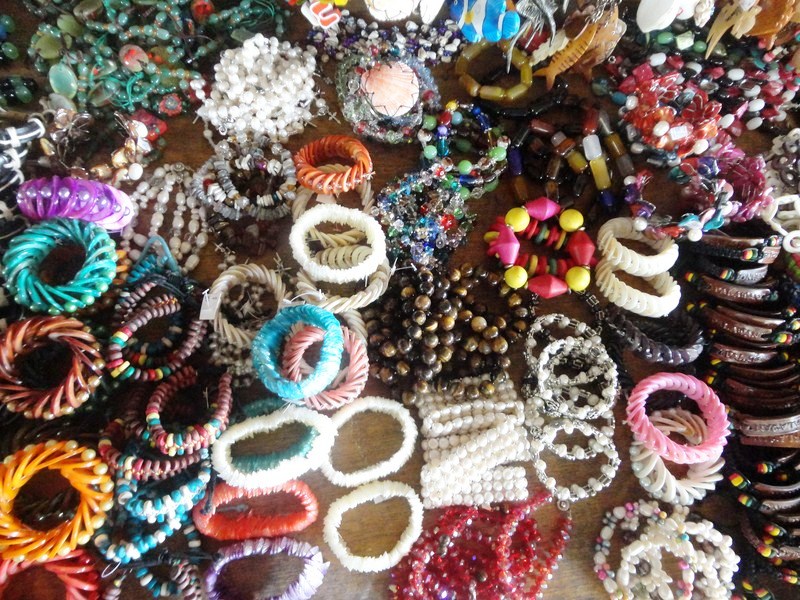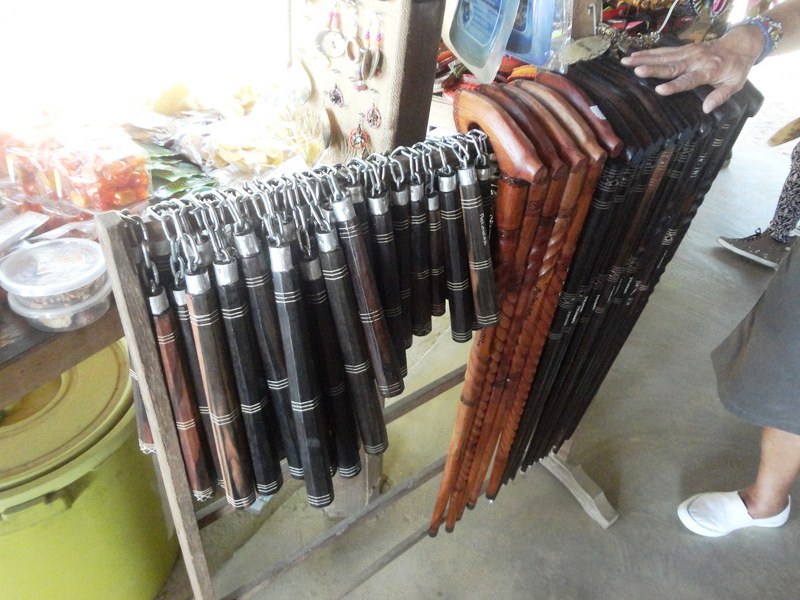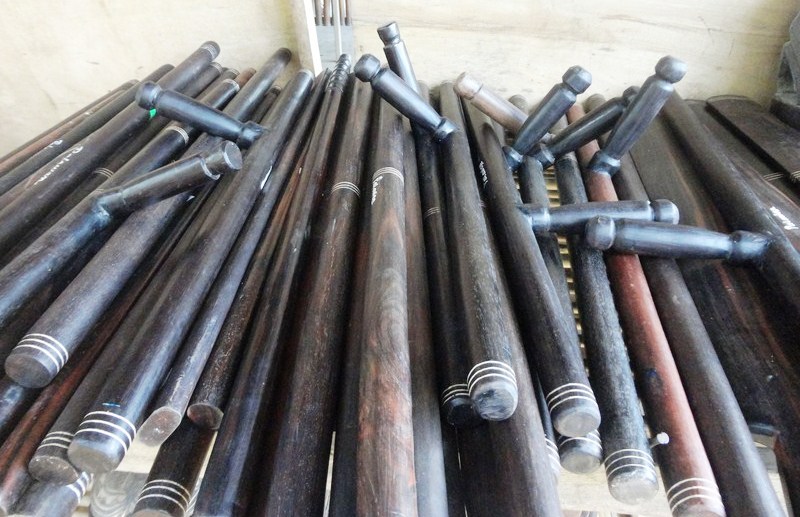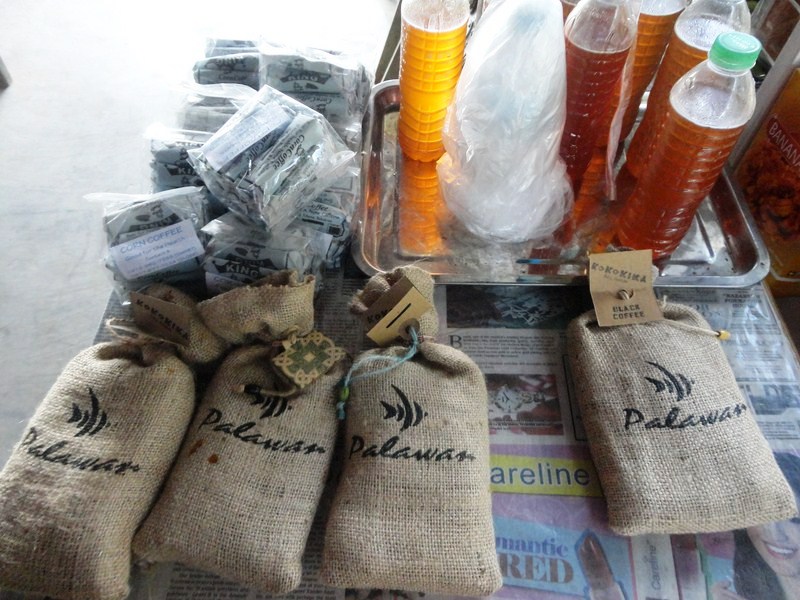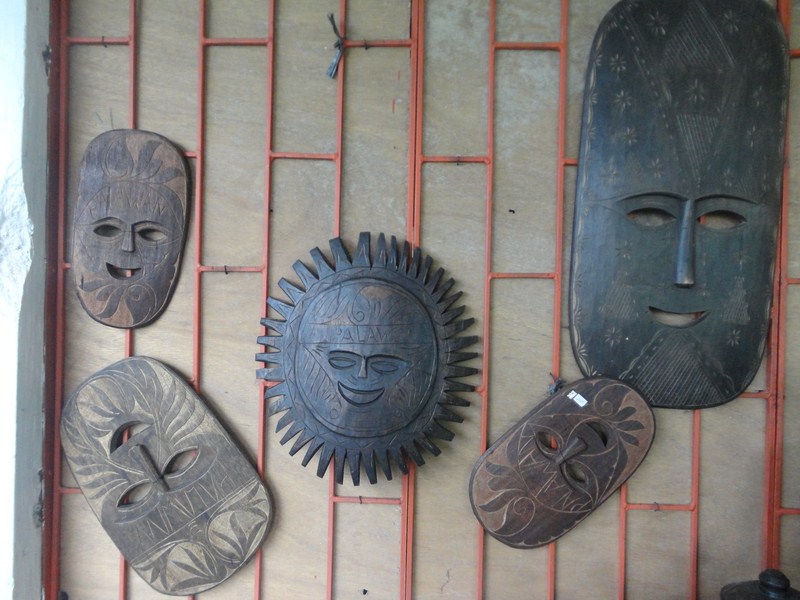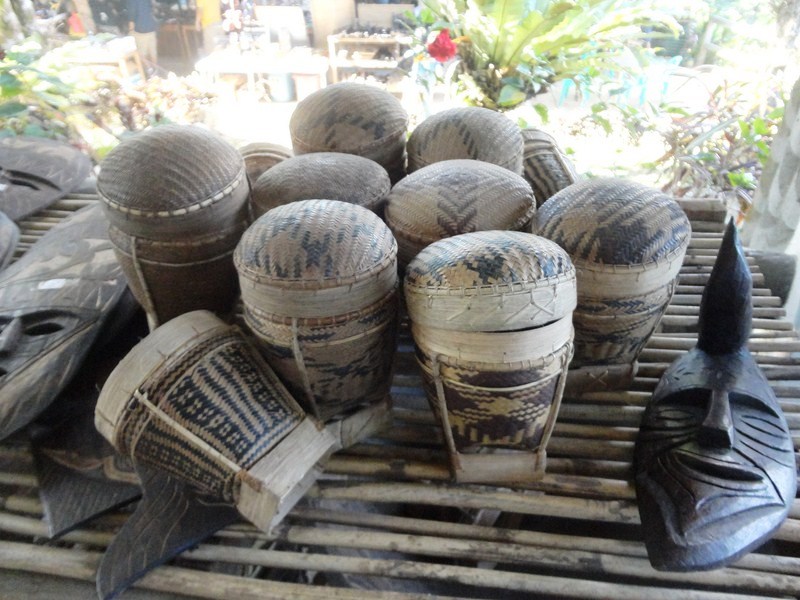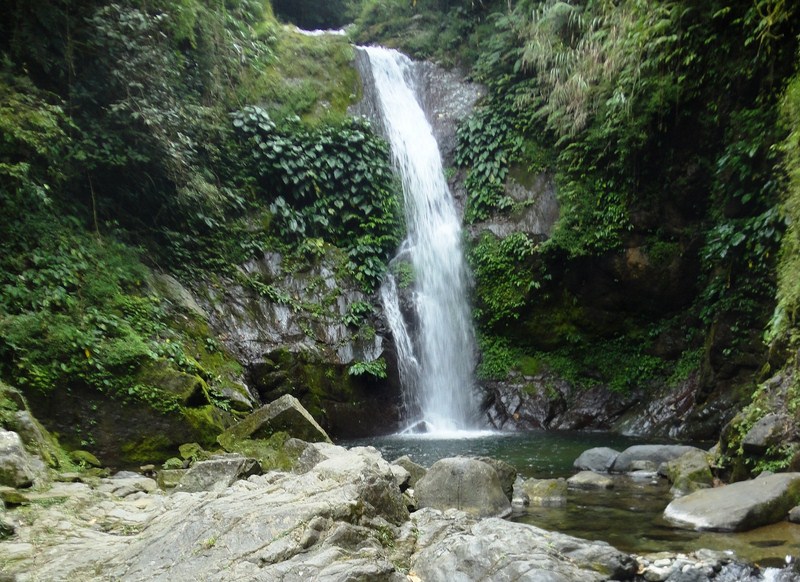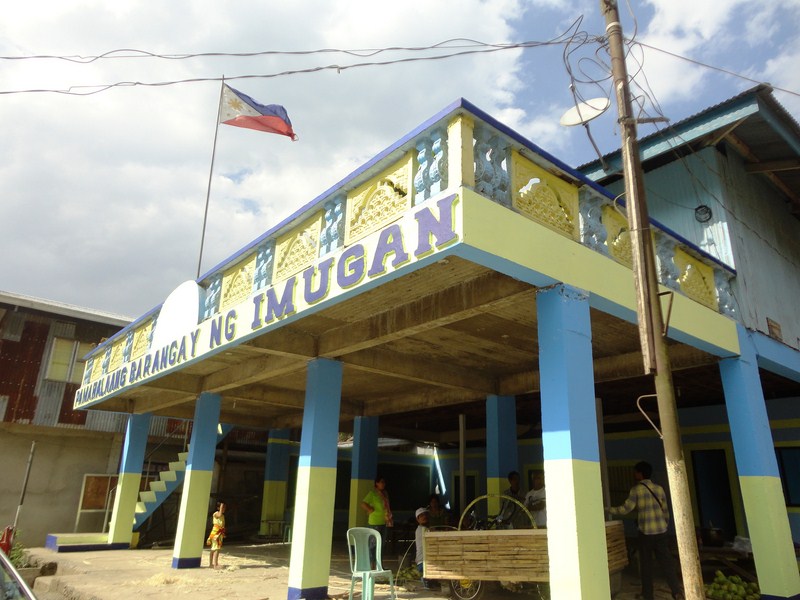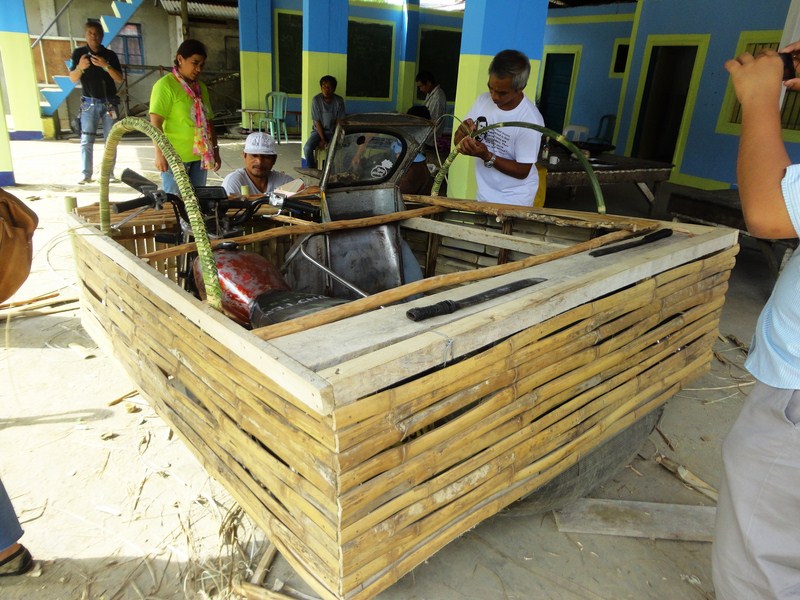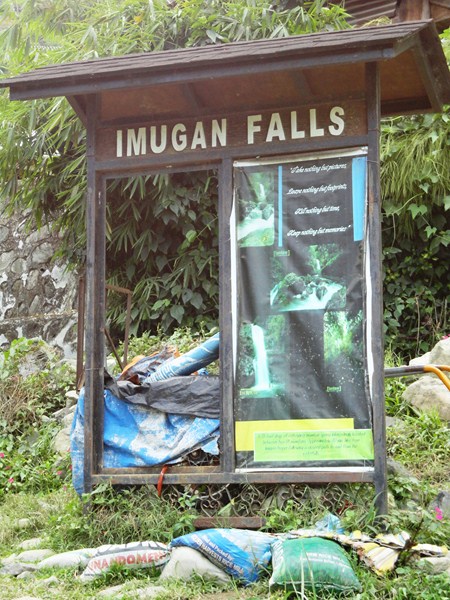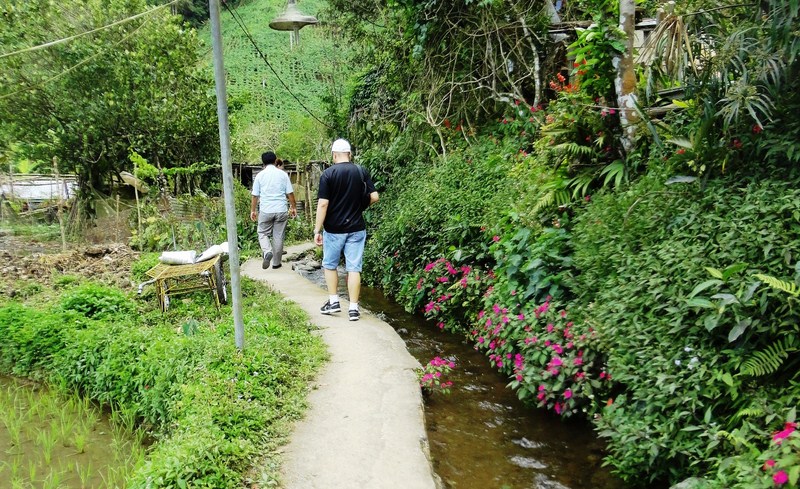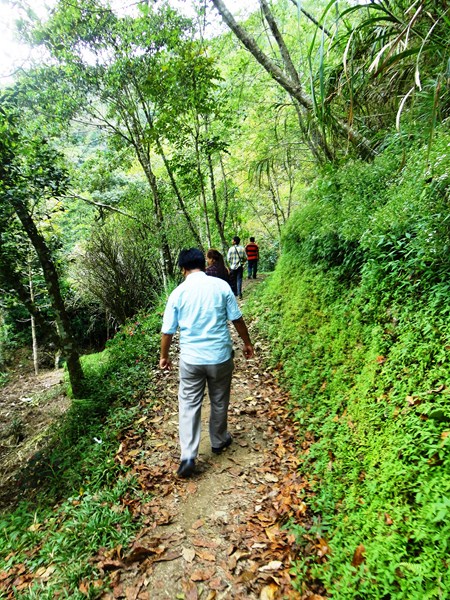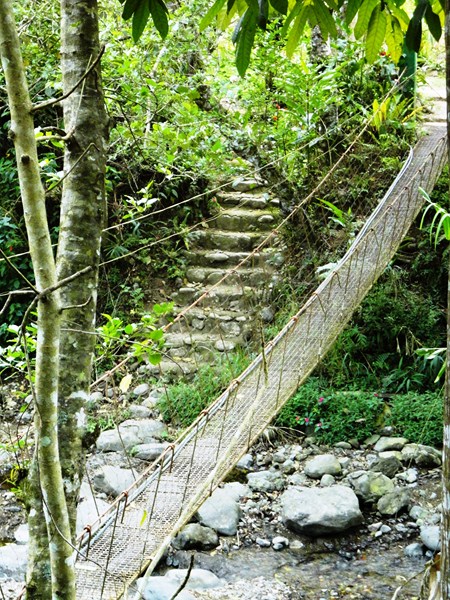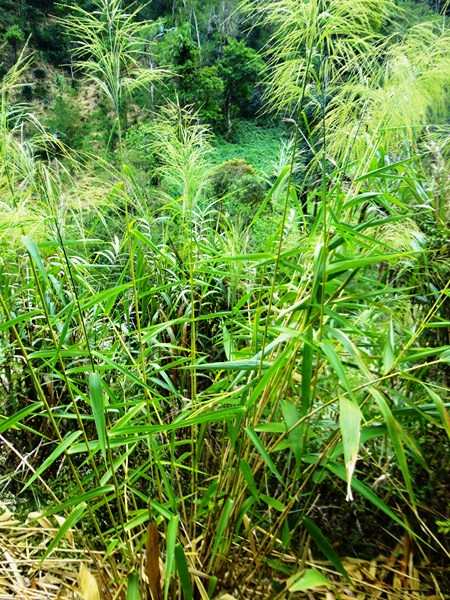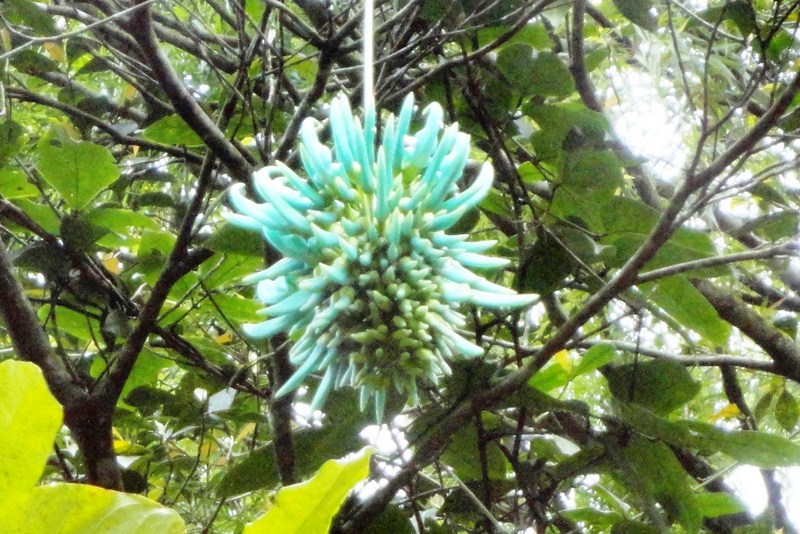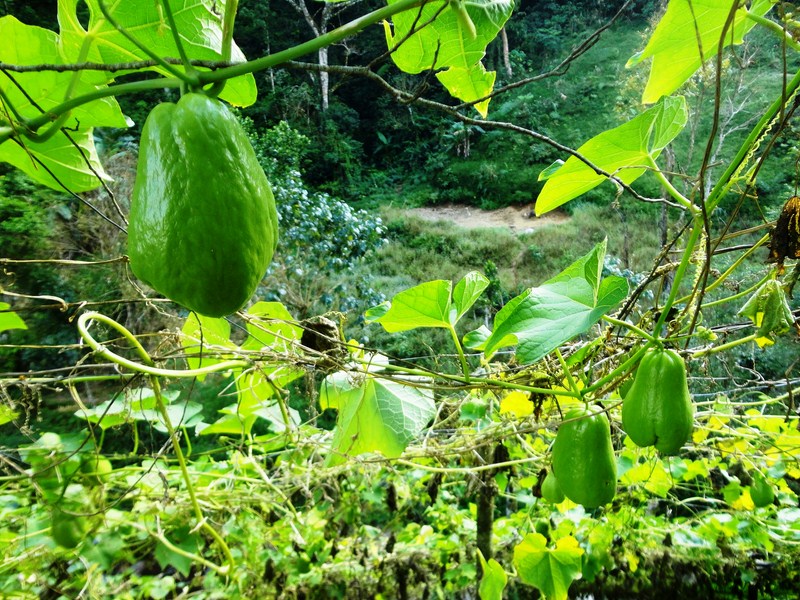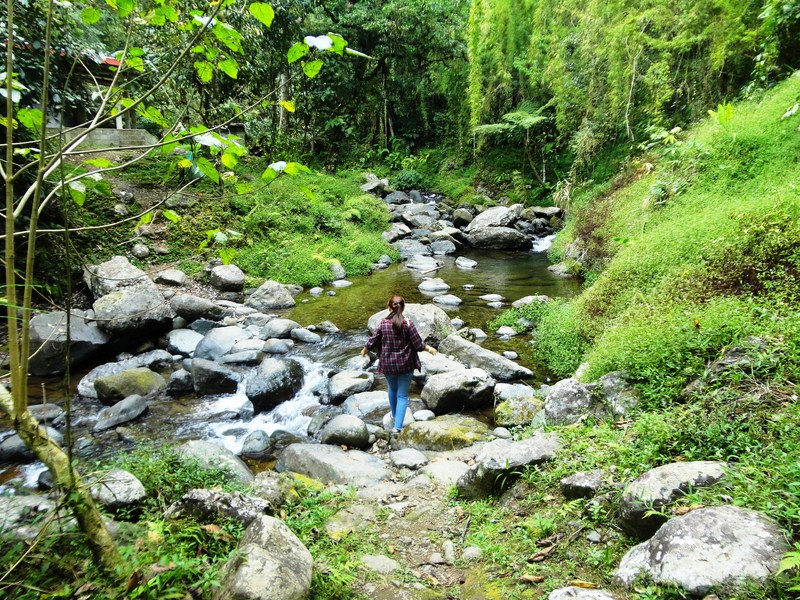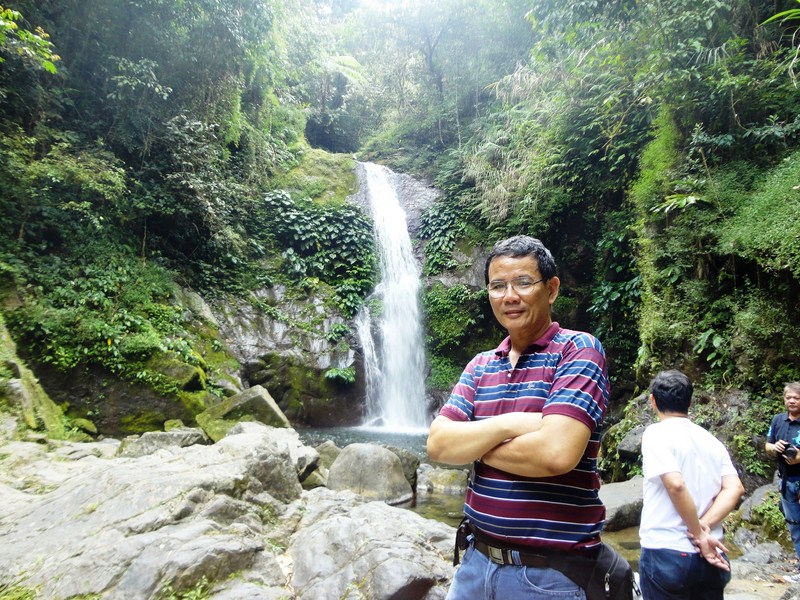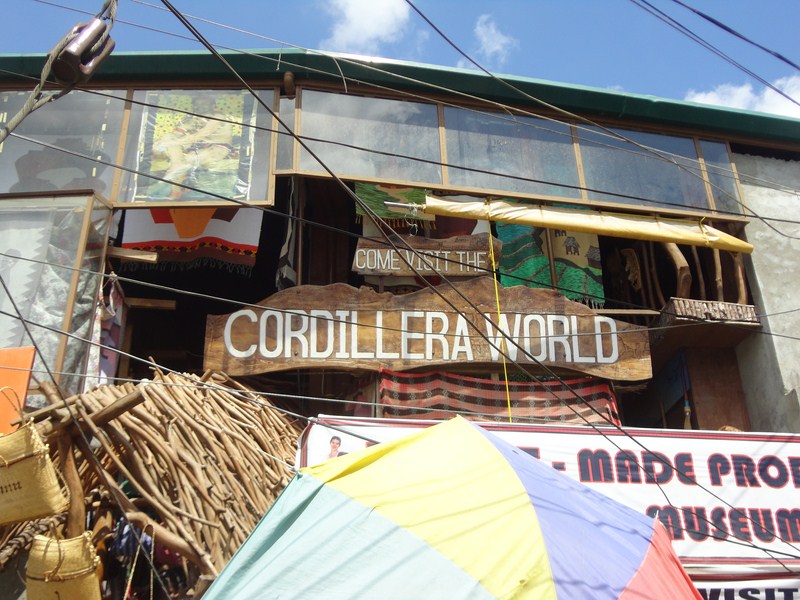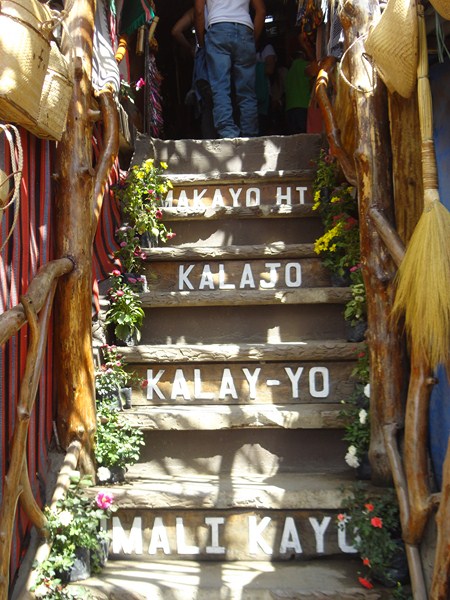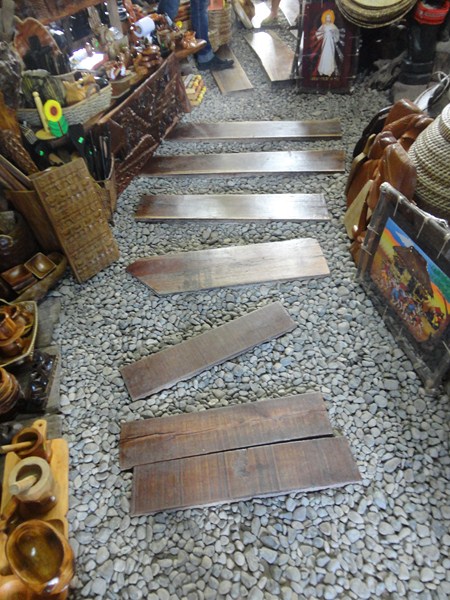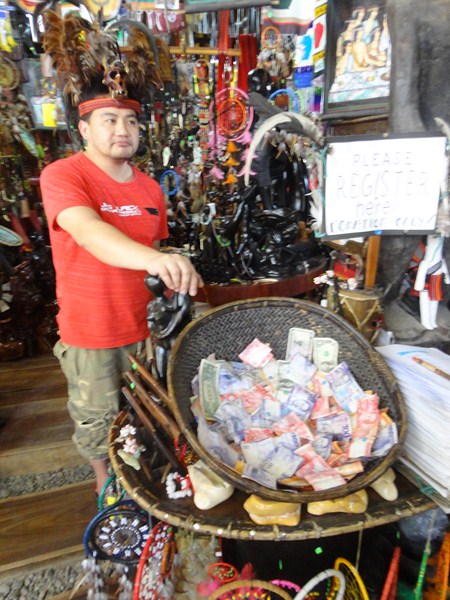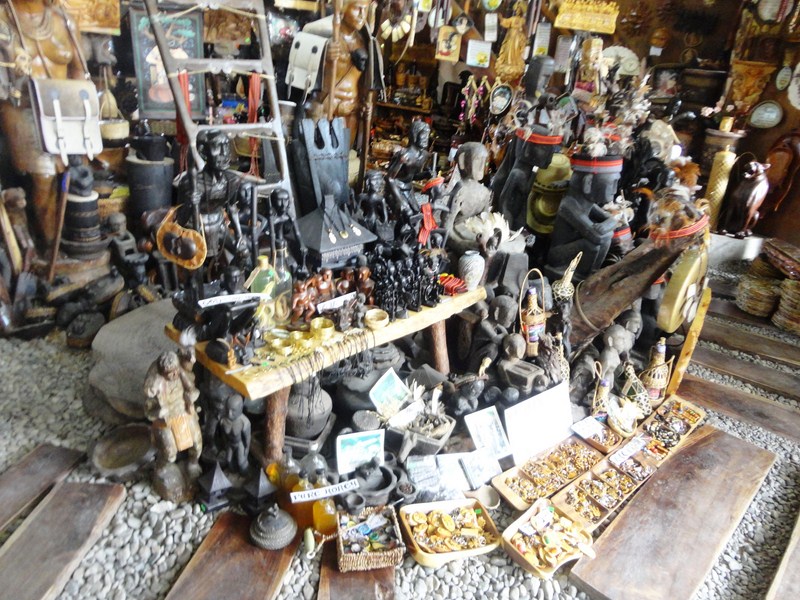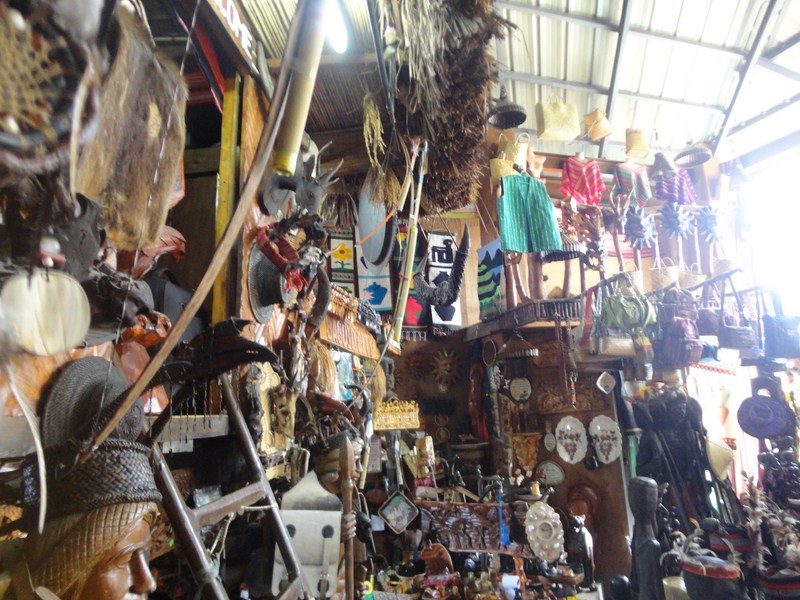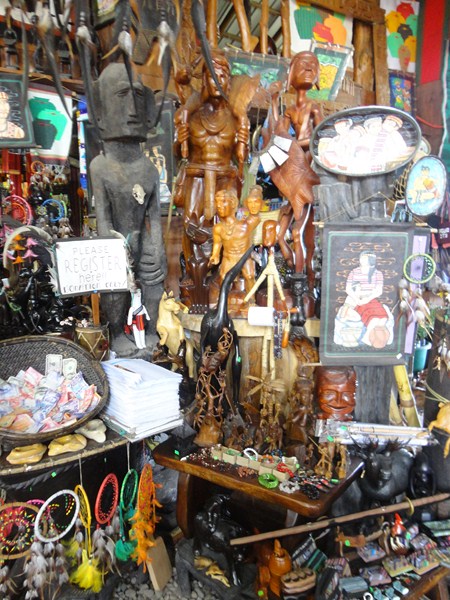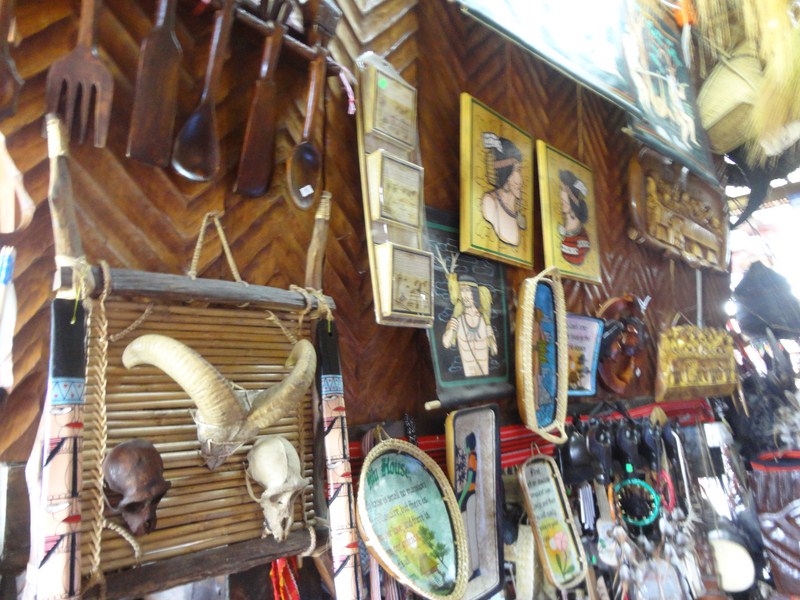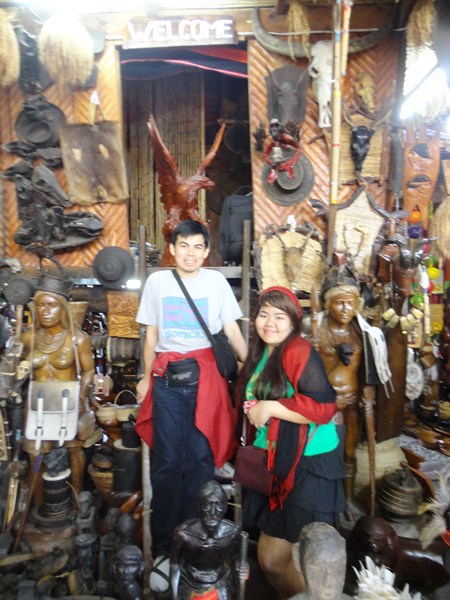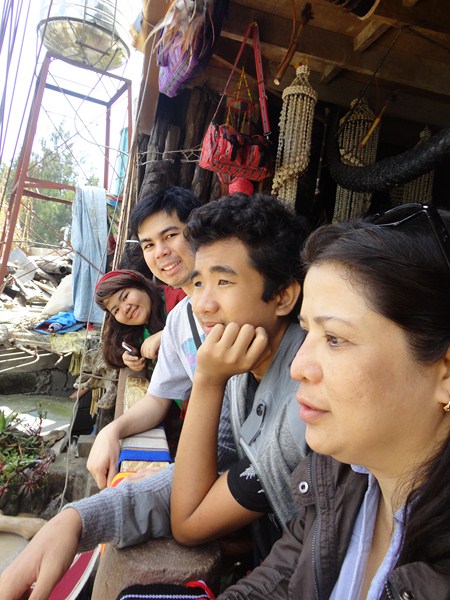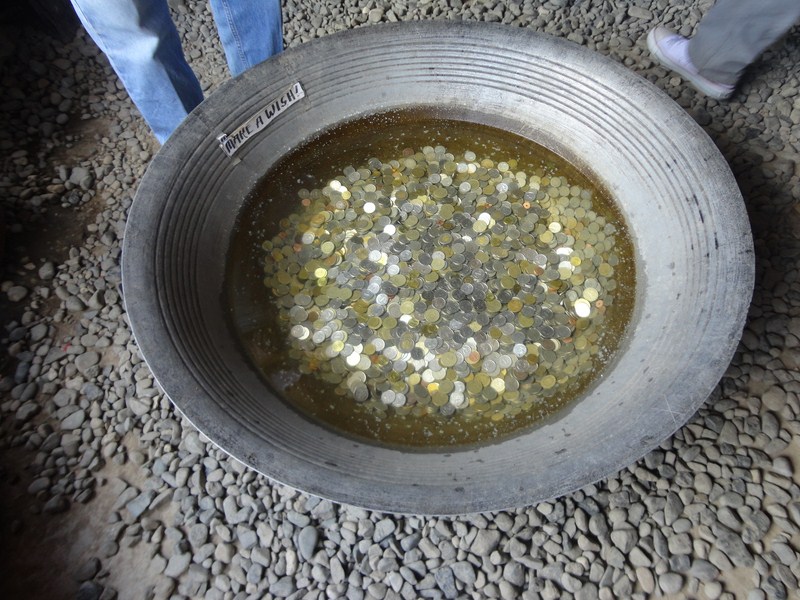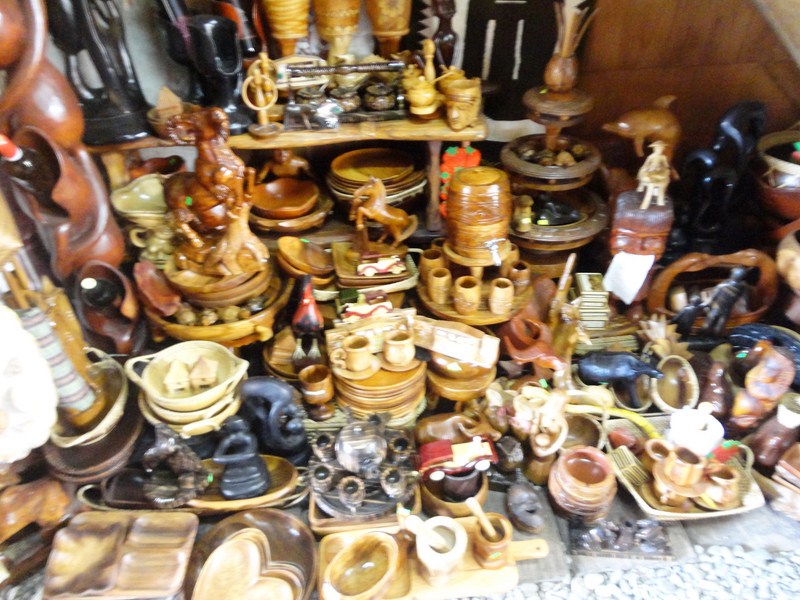From Culion Island, we again boarded our motorized outrigger boat for the small Pass Island where we were to have lunch. While we were away touring Culion town, the fresh fish, squid and chicken that we brought along was grilled on board the boat.
The clean, quiet and very picturesque Pass Island has probably the best beach you can find in all of Coron, with powdery white sand; warm, crystal clear blue waters, palm trees, mangroves on the other side of the island, and a protected coral reef, with different sea life, you can enjoy snorkeling. The beach has a pretty shallow part, perfect for non-swimmers and children.
For visitors who pay a reasonable entrance fee (PhP200/boat), they have beachside tents and gazebos (PhP100/table) with plastic tables and chairs to dine in, hammocks where you can relax and chill in for free; and more than decent, immaculate bathrooms, definitely a bargain to have.
Upon landing, our group stayed at one gazebo where we partook of the grilled fare with steamed rice and soft drinks. After lunch, Mike, Lindy and I donned our masks and snorkels to explore the island’s nice coral garden stretched along a line of black buoys. The fantastic variety of coral, with lots of small fishes, kept my attention for a good hour or more. The fish swarm around you, hoping for food, truly a surreal experience. To find the colony of giant clams, I had to inquire its location from a fellow snorkeler.
I would definitely recommend this beautiful, pleasant, postcard-pretty and well-maintained island, a great photo location, to anyone who wants to see a slice of paradise! Though its sand is not as white and powdery as that in Boracay, don’t let that stop you as it is still a beautiful and definite quieter place. I can say that it was totally worth it. I wish i had an island like this as I could have stayed there all day. However, we had to leave the island before 3 PM to avoid the big waves.
A popular day trip island, the owner of Pass Island also offers overnight packages in bamboo and thatch huts. However, you will have to bring your own food and potable water as the only things they sell are snacks like chips and soda. Bring portable lamps and flashlights as the island has no electricity.
How to Get There: Pass Island is a 1.5-hour boat ride from Coron.
How to Get to Coron: Skyjet Airlines has 4 times weekly (Mondays, Wednesdays, Fridays and Sundays, 10:30 AM) flights from Manila (NAIA Terminal 4) to Coron (Francisco Reyes Airport). Travel time is 30 mins.
Asia Grand View Hotel: Governor’s Ave., Jolo, Brgy. 5, Coron, Palawan. Tel:(+632) 788-3385. Mobile number: (0999) 881-7848. E-mail: gsd@asiagrandview.com. Manila sales office: Unit 504, Richmonde Plaza, 21 San Miguel Ave., Ortigas Center, Pasig City. Tel: (+632) 695-3078 and 531-8380. Mobile number: (0917) 550-7373 to 75 Fax: (+632) 695-3078. E-mail: info@asiagrandview.com. Website: www.asiagrandview.com.
Skyjet Airlines: Manila Domestic Airport, Parking A, Terminal 4, NAIA Complex, Brgy. 191, Pasay City, Metro Manila. Tel: (02) 863-1333. E-mail: sales@skyjetair.com. Website: www.skyjetair.com.
